May 2019
27th May - Summer is a comin' in alright, and it does look as though we could be in for another dry one in this area. Rather than waiting until the soil is bone dry, I am trying to make sure that most crops groing in the ground get a good soak once a week, with "thirstier" customers working up to two per week as they develop a larger leaf area. The crops under cover also get two good waterings, and that enables the soil in the polytunnel beds to stay evenly moist. I am a great believer in watering the soil , not the leaves, and so prefer to water by hand rather than using any sort of sprinkler or a hose nozzle that sprays water everywhere. I usually manage either an early morning round, or late afternoon/early evening, which gives the water a chance to soak in rather than evaporate immediately in the sun and the wind
Harvests are still a little on the thin side, and crops in store are beginning to come to an end, so I am looking forward to a wider range of edibles in the coming months
Harvest Monday begins with some "first of the season" offerings, as well as the sumptious sweetpeas that are coming bunch by glorious bunch now from plants overwintered under cover.
Ulster Prince Potatoes, planted in the border of PT2, have started to flower, which usually indicates tuber formation is well under way, so I had a gently furtle and pulled out enough for a couple of meals for myself. This is a variety I've not grown before, and i was swayed by the description "Extra Early". They also however, hold together well when cooking and, most importantly of all, have a good flavour
The other "first" is no less welcome: Elderflowers. I have been scanning the bushes along the hedgerow on our site daily, waiting for the first flowers to open. I cut these before the sun moved onot them, and they were just full of pollen, which is a huge contributor to their unique perfume.
These went straight home and were snipped from their stalks straight into two containers, one to steep in Gin, and one to make Elderflower and Mint Vodka. The liquids have already started to turn golden, which is a very promising sign of things to come (I used Spearmint)
I am hoping to gather more in the next few days to make further liqueur-style beverages.
Lettuces are so good right now. Webb's Wonderful's are as crisp and flavoursome as ever, and I also cut the first of the Black Seeded Simpsons that overwintered in the open, having grown from self sown seeds. Some of these are absolutely huge: I'll try to remember a photo for next weekThe All the Year Round growing under cover are developing rapidly, whilst those outside are only really just picking up... it will help with succession though as they will not all be ready to eat at the same time
Broad Beans are providing several picking a week now, and are growing faster than I can eat them as immature pods really. I am leaving half the plants to develop mature pods now, which seems practical. I picked the first two this week, the beans were about 2cm long and very good indeed
Out on the Plots:
All the beds now have something planted in them, and this week I didn't sow any new crops, for the first time in ages. I took full advantage of this, and started painting the sheds. Two of them were looking particularly shabby now and need fresh paint and some minor repairs, so finishing these is on the list for this coming week. Not the most exciting of projects, but essential if the sheds are to contiue to be serviceable.
The second early potatoes are romping ahead now, and their growth looks more lush than the earlier varieties. I water directly into the gullies between the earthed up ridges, to allow to=he water to soak into the soil down where the tubers are growing
The Blue Belle tubers in their giant tub are pushing up out at the top now. The tubers are planted 15cm from the bottom, and the haulms have been carefully earthed up as they grew, giving a good long length in which new potatoes can develop in that lovely rich compost... at least I hope so!!
I shall be sinking an upside down bottomless plastic bottle into the centre of the compost in the next day or two, to make sure that water can penetrates right down to the bottom, and not only wet the top few inches
Both plots are looking much more colourful and are absolutely alive with buzzing insects feeding from the flowers. This year, there is a wide range of colours amongst the foxgloves, ranging from deep mageta to white, some with spots inside their blooms, some without, and some plants with two-tone spires of flowers, like this one here. They are all self sown, as I leave the seedheads on until most of the seed has dispersed. They come up all over the place, but are easy enough to trasnplant when they are small, and certainly easy to weed out when there are just far too many. I wouldn't be without them.
They also have colonised other nearby plots too, as the seed is small and light, blown easily by the wind over several metres, and gradually they move further anf further across the site, sometimes meeting up and cross pollinating with strains from other growers' plots as they go.
Wonderful, tough plants, that naturally would be found along the margins of deciduous woodland, but seem versatile enough to cope with all sorts of situations
I always leave some Hedge Garlic aka Jack-by-the-Hedge to grow on the edges of beds and out on the verges too, as these provide food for the caterpillars of Orange Tip Butterfies. They ay their eggs in amongst the little clusters of white flowers, and the caterpilars feed on the developing seedpods. They are amazingly well camouflaged, but I spotted this one s I walked past... and when I stated searching, there were quite a few, so it looks like we shall have Orange Tip Butterflies on the plots again next Spring
In the Polytunnels:
I was looking forward to having some juicy Mangetout soon, but the plants in PT2 were absolutely smothered in aphids, to the point on no return, so out they came. There were a few aphids on the sweetpeas too, but I spotted these in time to squish them before numbers built up. Perhaps I need to wear my glasses in the tunnels more often. A least it is not toolate to sow some more Mangetout
The Dward French bean plants were undermined by a mole, although after a good soak and re-settle, they seem to have survived and have some bright white flower buds showing now.
In PT1, the tomato plants are beginning to grow away now and several have flower buds: one or two have green fruit. They really need some proper supports now, before they get too tall and start to fall over. Another job on the list for this week
It was a day of mass hatching for Large Red Damselflies, and the fish were absolutely stuffed with nymphs they had sucked off the iris roots as they started to climb up to shed ther nymph-skins. Plenty did make it though, one advantage of the mass hatch of course, and left their ghostly skins attached to the top of the iris leaves
And once their wings were expanded and dry, the Damselflies set about the creation of the next generation. You can identify which are females by the golden hoop markings around their abdomens* Males lower the females below the water level to lay eggs, holding them by the back of their neck with special claspers on their rear end. The female makes tiny slits in plants stems to lay their eggs in, individually. The nymphs then spend two years living under the water, eating small creatures, until they are ready for their spectacular metamorphosis. So lucky to be able to watch them, and all because I wondered what the fish were doing
* There are also forms which have black hoop markings or are almost entirely black, but we have never seen these in our garden
And to finish today, here is the first bloom of the year on our Sharifa Asma rose, which is so richly perfumed you can almost taste its sweetness asn you inhale its scent. It was Abi's favourite flower of all time, and its appearance this morning was tinged with sadness as it reminded me how much I miss him.
I shall be back next week, with news of harvests and of growing for more harvests, plus, I hope, more Elderflowers.
Thank you for reading this week's blog... all comments are welcome of course
My contact email is
info@alittlebitofsunshine.co.uk
Comments and suggestions are most welcome, and I shall reply as soon as I can
And if you'd like to know more about Harvest Monday, look at
21st May: Birds Halt Rhubarb Harvest!! After getting all excited last week about making more Rhubarb Gin, I discovered that once again Blackbirds have used the stumpy bit of the Rhubarb root to support their nest. As Blackbirds live for several years, I would guess these are the same birds that made the nest I discovered last Autumn, when the Rhubarb died down. This is their first brood of the year, and the last little one to fledge sat and stared at me through the forest of stems, before scrambling down out of sight. I shall resist pulling any stalks for a while, so as not to disturb them too much. Maybe I could take some from the adjoining plant? Hope so... that gin is waiting...
Harvest Monday begins with Lettuce. This is the first of the Webbs Wonderful ones. It was absolutely crunchy and everything a lettuce really need to be. A whole slice in a cheese sandwich was brilliant. I have never had much succes with this type before, and it seems that growing them under cover produces much better results, at least for me.
Calendula is always a very welcome harvest, and round the plot there are dozens of plants of various shaded of orange and yellow, all of them self sown. This one s especially fine, just popping up along the side of the path next to the potato bed. These "Gifts from God" are always appreciated, bringing pretty splashes of colour throughout the Summer, as well as food for insects. The petals add a colourful spiciness to salads, and in the past I have added them to muffins too. I shall have to try this again, and share any successful recipe with you. They will certainly add a beautiful golden colour to them, for sure
The last of the Radishes were pulled up today, and will be joining some more baby Broad Bean pods in a stir fry to go with tonight's dinner. Several other plot holders on our site now have beans with small pods like this, and so I am sharing with them the idea that you can eat these young pods whole. Lots of interest, which doesn't surprise me, as most growers are keen to try different ideas for eating their crops
The next cropping of Radishes are coming along nicely, but it will be at least two weeks, if not three, before they are large enough to eat. Looking forward to them already! I shall have to emember to sow more in a week or two, so that there is more continuity, as they are such a versatile and tasty crop. I might try some of the other varieties, rather than more Cherry Belles. Have to see what is in the seed box
One or two, Perpetual Spinach plants are still growing young leaves, which have been used in salads, as have pickings of Flat Leaf Parsley and Mint leaves.
This week on the plots
It has been a week of hard slog, with long days of physical work, preparing soil and structures to help crops grow well. I wrestled a large piece of weldmesh into the the giant coldframe, digging enriched compost into the soil to create an area where Chinese Slangan Cucumbers, Dhudi Squash and Serpentia di Sicilia can climb, together with some sweetpeas and morning glories. The space in front looked a little empty, so I planted a few Bizzie Lizzies there to add a splash of colour.
(The weldmesh is secured to the back of the frame with cable ties, to ensure it stays in place once it is covered with foliage)
I also cleaned up the small coldframe so that the Cordesa Cabbages, Perennial Nine Star Cauliflower and Daubenton's' Kale plants have somewhere cool to grow on, and are safe from the earliest Small White Butterflies. The next lots of Brassicas are now potted on . more Cordesa. Monclano Calabrese, Clapton Cauliflower and Crispus Brussels Sprouts ... and there wasn't enough space in the coldframe for them. I made a temporary one for them, out of planks covered over with debris netting, where they can stay until there is space for them in the ground: they will follow the Garlic and Autumn Onions.
As the plants are smaller, they can also be protected temporarily by some shade netting until their roots become established. I aim to take this off in a week's time
The soil has been enriched with well rotted manure, several barrowsful from the covered pile outside the back gate, as well as a sprinkle of seaweed meal, and been well soaked an hour before planting. This should be enough water for them for the week, as the covering also reduces evaporation from the soil surface.
The two larger plants at the front were grown by my Son-in-Law, and their leaves wilted very slightly, as I planted them yesterday without any protection from sun and wind. They soon picked up once the shading was in place
The outdoor tomatoes, which are all Blight Resistant varieties, are now planted in their bed, again in enriched soil. They were in their pots a little too long and were starting to look a bit pale, but I planted them nice and deep, so they should soon improve and grow away nicely. I haven't put their supports in yet, as i just ran out of energy. It's on the list as a priority though
The Bearded Irises are currently putting on a great show across the plots, and there is a lovely mix of shades of blues and purples. One surprise is this beauty, which started off pale, icy blue and then aged to pristine, pure white. It is one I gained from a Plant Swap Evening last year, and I am dleighted with it. If you look closely, you can see a Rose Chafer Beetle on the lowest flower: another one buzzed in shortly after I took this photo, to feed on the pollen.
The other "heavy" job has been to turn the top third of the compost, adding more shredded paper as some of the mix was a bit claggy, but also gave everything a soak, as there were ants movng about in there, which is usually a sign it is too dry. It took ages, but is well worth the effort, as it helps improve the end result. It is already heating up much more evenly
It has been an interesting week on the plots wildlife-wise. Orange Tip butterlfies have been laying eggs in the flower heads of Hedge Garlic, which I leave to grow just for them. Baby wrens fledged from their nest in the Hawthorn Hedge we planted four years ago, spending their first short hops and flights in and out of the large rosebush above the dipping bath, I was scrubbing out the bath, and it felt they were around my head, with their tiny peeping cries and calls to their parents. Such a privilege to be so close
And then the next brood of Ladybirds started to appear, with this one starting off with the merest shadow of spots and within the hour looking quite different. Really pleased to see them mulitiplying, as there are certainly lots of aphids on the greengage tree this year
In the polytunnels this week
It has been about watering and weeding in the main. The Bizzie LIzzies and Lobelia plants were ready to be planted, and are now in pots near the seating area, and the Antirhrinum seedlings transplanted last week all appear to have taken.
The main task in the coming week is to put in the tomato supports, and sow some Basil seed.
I think I have now worked out how to make some new ventilator covers, and with the season moving on so quickly towards Summer, I need to start work on the netting cover between the two tunnels. This will help keep the temperature down in them on hot sunny days
At home the greenhouse is now almost empty, just the chilli plants from my daughter in there at present. I need to give everything a good clean and then prune the grapevine. There are lots of bunches of grapes, and these need thinning too. Certainly plenty to keep me busy!
In the garden, I am gradually putting away the pots and trays, and this week would like to plant up the troughs by the kitchen door, as well as the dahlia pots. At this time in the year there never seem to be enough hours in the day!
The Calamondin Orange and Lemon trees are now outside, both with flowers open. I hope the bees buzzing round them are fertilising these, so that new fruit starts to grow.
I forgot to prune this Just Joey rose in the Spring, and it has grown right up into the fig tree, with more blooms than ever. It seems a richer colour than usual, but once the flowers are fully open, it may be that the petals are paler on the inside. Either way, it is very pretty and smells good too
I shall be back next week, hopefuly on Monday, no doubt with an ever growing list still, as usual!
My contact email is
info@alittlebitofsunshine.co.uk
Comments and suggestions are most welcome, and I shall reply as soon as I can
And if you'd like to know more about Harvest Monday, look at
13th May - A "Rhubarb Week" all round! The rhubarb is absolutely luscious right now, and depsite giving a lot to other people, still seems as plentiful as ever. Seems appropriae to start Harvest Monday really!!
My own Rhubarb stalks have been cooked in various ways, including gently stewed to accompany rice pudding, and a further batch of alcoholic delights as well. The first bottle of the season is Rhubarb Gin, which, as you can see, is a lovely shade of pale pink. The second will be in to macerate later today, and will be Rhubarb and Ginger Vodka.
Next to the table are Broad Beans. This is the forst time I have grown early broad beans under cover, and I need not have worried about lack of pollination... just look!! These pods were steamed and eaten whole, and they were totally delicious. I can't wait for more to grow large enough to pick: a real Spring treat
I needed to clear the last of the Autumn- sown Spring Onions from one of the polytunnel beds. Thye have gotten a little larage but do still taste good. These are joining the Lettuce in soup. I had a quick go at making some at the end of last week and it was quite good. I think a second batch will probably be even better after this practice run, so a recipe may well follow in afew days' time.
The Spring sowing, which was a bit later than usual this year, are now beginning to grow on again after their transpant shock. each module-full has been planted as a small clump, which will grow to make bunch-sized pullings in a few weeks' time
And here are the Lettuce. These are Little Gem, grown under cover, and they are beginning to look as though they migth go to sed soon, so I thought it best to make a batch of soup rather then end up putting the last few in the compost. They do tend to be a little bitter once a flower stalk starts to grow, but these are still sweet and succulent.
My plan to have a succession of lettuce seems OK so far, as there are some Webb's Wonderful beginning to heart up now. I have never had much success with these before, so fingers crossed they carry on growing well. There are seedlings of All the Year Round planted out as well. I might leave a gap without sowing more for a week or two, to see how these get on. Might try a coloured leaf variety then perhaps
Cherry Belle Radishes are excellent still. I sowed a further short row in PT1, as the ones sowed outside came to nothing. I think they probably germinated and then died off almost immediately due to lack of water, as they were in a particularly hard section of the plot. This next sowing was up within a few days though
Out on the plots this week
Flag irises are starting to bloom, including this pretty bluey purple one, straight outside the door of PT2. This has developed quite alreg clump now, so I shall divide it in the Autumn and plant some outside the gate of #145. As long as the top of the rhizomes are exposed to the sunshine, they are not too fussy about soil type, so may thrive in the dryish spot
I have had time to give some atention to flowers this week, planting out the sunflower plants in various spots, along with the self-sown antirrhinum seedlings from PT2. They are still very small, so I hope they survive. A friend gave me a part-tray of tiny seedlinsg too; these are now pricked out into modules, and can stay in PT1 on the staging for a while, where it is slightly shaded, to help them establish.
All except one of the chrysanthemum plants have made it through the Winter and are now showing lots of new growth, and almost all the dahlia tubers planted out have shoots visible now too ... very promising!
IThe Syrian Black Broad Beans were hardened off this week and are now planted out alongside the peas: i decided to give this space over to them, instead of a second sowing of peas. I have absolutely no idea how they will fare or what they will taste like, but if they are worth growing, then I shall be saving seed for a decent sized crop next year, and sharing them with my neighbour too, whose wife adores broad beans! I do know that the seeds are the size of peas when they are dried, and black, but I would think the pods will be green.
Last week I mentioned the bee hotel, which is being so well used this year, and there continues to be a stream of bees busy filling nest holes with pollen for their eggs and seling them over once full Lots of Mason Bees, one Leaf Cutter Bee, some Wool Carder Bees, that have collected fluff from the leaves of Muellin growing nearby to add to their nests.... and then an insect I had never seen before, and did not recognise at all.
Thanks to Daniel for the ID: it is Ruby Tailed Wasp, one of a group of non-stinging solitary wasps known as Cuckoo Wasps, as they lay their eggs in the nests of solitary bees. My photo was not too clear, so I have added a stock photo to shw how glorious this tiny wasp looks.
If you look closely at the photo of one sitting on the hotel, you can see a little bee face peering out on its right. I thought she was waiting for me to go before flying out, but now I realise she was making sure the wasp didn't lay an egg in her nest
In the polytunnel this week
It has been all change in PT1, with the soil in both beds now enriched with compost and Blood- Fish & Bone, tomatoes and peppers planted, plus the Malabar Spinach, Emir Melons and Diva Cucumbers planted by their support nets. As aways, it has been a squeeze to ift everything in, but I have tried really hard not to plant things too close together so give them the best chance to crop well.
The white contraption is fleece over a large cloche frame, to protect the pepper plants from cold nights for just a little while longer, in the hope that they don't stop growing now they are not in the cosy greenhouse at home.
Tomatoes: Ox Heart, Black Cherry, San Marzano, Cyril's Choice, Country Taste, Apero, Super Marmande, plus four from my Son in Law which as yet are unidentifed but all different varieties... once they fruit he will be able to tell me what they are
Peppers: Marconi Long Red, Kings Mixed Sweet, Gogorez
Chillies: Dedo de Mocha, Cherry Bomb (plus more to follow from my daughter, that will be grown in large pots at home.. more about these next week)
As well as the lettuce and radishes already mentioned, I have sown a row of Pak Choi and one of Choi Sum, all of which have already germinated. Not grown Choi Sum before, so lookng forward to something different
In PT2, the onions have been fed, as the seaweed meal arrived at long last. You could almost see them breathe a sigh of relief!
The first lot of sweetcorn (Goldcrest) plants have been planted out amongst the broad beans. This is a bit of a trial as usually they have space to themselves, but I thought they may benefit from the nitrogen fixed by the bean roots. Once the beans are finished I shall cut the stems down to ground level so as not to disturb the sweetcorn roots. Let's see how it goes.
The second sowing (Swift) are now an inch tall in pots at home in the greenhouse. Both are supersweet varieties. Not quite sure where I can plant these... space is suddenly very tight...probably have to be outside I think
The Cornichon plants are planted by their net, and look raring to go. I must try to harvest them when they are small and not let them turn into big blimpy beasts
This week a plot holder who used to live in Nepal offered me some seedlings of plants she has grown which are "local" to her family. It is really interesting to compare varieties of vegetables familiar to us both, and some which are new to each of us too. So in return for some seedlings of Purple Sprouting Broccoli, plus an armful of Flat Leaf Parsley and Chard leaves, she gave me three Aubergine seedlings and a seedling of Luffa. This turned out to be two seedlings a day later, and Luffa, from her description is possibly something I know as Bottle Gourd or Dhudi
Quick reshuffle needed around the plots to make space for a climbing gourd -- I knew that tall piece of weldmesh would come in handy -- but the three Aubergines went in a bed in PT1 straight away.
Lovely!
At home, most plants still in the greenhouse are being hardened off... outdoor tomatoes, climbing beans, Caribbean Daisies and Euphorbia oblongata. I shall be able to give the greenhouse its start of Summer clean soon, and prune the grapevine again so that it doesn't swamp everything. It always feels good when plants are leaving the greenhouse faster than seedlings are going in!! The seedling Winter Squashes are still there though, waiting to be potted on. At least there will be staging space for them for another week or two until they are large eouhg to plant out. Gives me a chance to get their bed ready for them, the very last one of all to be done, and I hope to get to it next weekend.
This year I am planting Queensland Blue, Ute Indian, North Georgia Candy Roaster, Butternut Hercules and Uchilki Kuri plus Butternut Waltham and something that on the label looks like Pumpkin Winter Lunacy ..hmmmm... I am sure he will let me know what it actually is. Good name though! These two plants handily replace Kakai and Cornell's Delicata, which did not germinate. I must remember to get rid of the remaining seeds, or I might absent-mindedly end up sowing them next Spring
In the garden right now things are just getting on by themselves, but I need to make time to plant the dahlias in troughs and the one tomato plant that will stay in the garden ...Orange Paruche... needs a decent pot to go in. I am sure there will be one lurking somewhere!
One plant which always comes good is this beautiful shrubby Salvia, and the sun shining through the bright red flowers and lighting up the perfect black buds early in the morning makes me smile
I hope you have enjoyed reading this week's blog. I hope to be back next Monday with an almost empty greenhouse and a Squash bed that is ready to go
Thnak you for all your lovely comments. they are really very much appreciated!
My contact email is
info@alittlebitofsunshine.co.uk
Comments and suggestions are most welcome, and I shall reply as soon as I can
And if you'd like to know more about Harvest Monday, look at
,6th May - Unseasonably cold this weekend, but plenty of action at the plots! This time in the year is the prime planting/sowing time, so weather not withstanding, I set to, to try and make sure hardy vegetables were planted out, whilst tender crops stayed safe from the frost and cold winds. Not an easy balancing act, as the greenhouse at home is groaning at the seams and the temperatures in the polytunnels at night have been too low for cucumbers and melons. One or two potato plants were frost blackened, but on the whole they were protected enough to cope. Apparently this May Bank Holiday was the coldest since records began... it certainly felt like it if you stood still for too long.
Harvest Monday begins this week with Radishes, which were sown some time ago in one of the tunnels, and are now in their absolute prime. More were sown this morning, to keep them coming once the frst crop has been eaten, and I shall sow more outside to mature a little later too
Lettuces are flourishing in the tunnel. This is the last of the Winter Density plants, and there are several varieties at different stages of development to follow on. Little Gems are ready to harvest, and a some went to different friends today: I currently have more than I need for salads. I shall be experimenting with Lettuce Soup during the week, which one of my plot neighbours assures me is very tasty. If so, a recipe will follow later this week.
There have also been the usual suspects in salads: Perpetual Spinach, Wild Garlic Greens and flowers, Chard, Spring Onions, Fennel leaves, Flat Leaf Parsley etc. I have so much Parsley at the moment i am giving it away by the bunch to anyone passing my plots. It is starting to bolt now, and the space it is occupying needs to be readied for the next crop. There is plenty growing outside though, so I shan't go short during the Summer
Several other flowers also made it to the salad plate .. Calendula, Viola, Rosemary ... and this week's addition, Hawthorn, both the flowers as well as soft new leaves
The flowers have a mild, nutty flavour I well remember from my childhood, when my brother and I used to browse along hedgerows, gathering anything edible as we went, with the confidence that came from experience. I think this kind of foraging is far less common these days, so I am really glad to be passing it on to my grandchildren, a season at a time, year by year, with the knowledge that anything unfamiliar needs to be checked out and indentified correctly before even a tiny taste.
Rhubarb is a weekly staple at the moment, and the plants are as massive as ever. They certainly seem to have benefitted from the thick mulch of grass clippings they had at the end of last Summer.
This week's uses have mainly been around chopped and gently stewed stems, some with rosewater, served cold with plain yoghourt and flaked almonds, some with minced stem ginger served warm with custard, and some just plain... all delicious!
I should mention that the Rhubarb Gin I put in to macerate a month ago is now a fetching shade of pale pink (despite this being a green-stemed variety) and is ready to strain and bottle. I'll post a photo of it next week. I've had a little taste, which I always do before bottling, as the last thing you want to do is bottle something unpalatable, and it has a lovely smooth fresh flavour. I shall put up another bottle once the container is available again, perhaps with some ginger added this time
MInt has been a real feature harvest this week, now that there is enough leafage available to make mint tea, as well as to use the growing tips in salad dishes
As all mints spread rapidly via underground stems, I am growing them in large pots: Oramge Mint and Moroccan Mint are sitting alongside the shed, where it is shady for part of the day, and I shall dig up a clump of Spearmint - makes excellent mint sauce - and Chocolate Mint - very good in sweet dishes - to join them. Although I am happy with Chocolate Mint invading the path as it smells so good when it get trodden upon, I am less keen with it swamping the Blueberry bushes!!
I love being able to just pour boiling water over a handful of mint and have a beautiful pale green tea within moments, and wouldn't want to be without a few varieties to choose from
That, though, is the last of this week's harvests
The early Leek plants are in the ground, a variety called Musselberg. I use the traditional planting method of poking a hole in the soil about 15cm deep, using an old broom handle (I add a few chicken manure pellets into each hole for extra Nitrogen) and then drop one small plant in each hole. I trim the roots down so that the plants drop in easily, and that seems to stimulate the plants to grow new roots. The plants need to be large enough to stick up out of the ground: if they are small, you need to make shallower holes
I then gently fill each hole with water, which settles some soil around the roots, and that, apart from occasional feeding and watering, is that. The stem below the ground stays white. If I have time, later in the year I'll draw some soil around each plant to increase the length of this blanched stem, but it is not strictly necessary The younger plants still growing in a tray will be planted ou to follow the First Early potatoes
Usually I prick out seedlings into pots, to grow them on to a largish plant before planting them out, but as the soil structure improves, I think fairly small plants should be able to cope with being planted out into the ground, so....here is one of the tiny Lollo Rosso plants I put in yesterday. It is only 1cm tall, but its roots are in good contact with the soil crumb, so as long as I keep it carefully watered, I feel optimistic about its chances of growing into a full sized healthy plant
With Brassicas, I try to make sure plants going into the soil on #146 are large, to give them the best chance of overcoming the Club Root that seems to inhabit the soil, but over on #145 so far there has been so sign of this scourge, so I thought I'd try planting the Purple Sprouting Broccoli seedlings straight into the soil too.
This week I have seen several Cinnabar Moths on the plots. These day-flying moths are unmistakeable with their red markings, as are their yellow and black striped caterpillars later in the year. These feed on ragwort, or groundsel, both of which are wild/weed plants. I do try to leave a few groundsels for them: these moths are not as common as they used to be.
Lots of growers have areas for flowers that adult insects can feed from, but their larval stages are just as important, so some provision for their food plants is essential.
This week, my plot neighbour and I removed a bank of stinging nettles from our joint boundary, behind my tunnels. Several species of butterfly, such as the Small Tortoiseshell and Peacock, need nettles on which to lay their eggs, but there are plenty available alongside the back gate of #145, which I cut back in stages to ensure there is always the fresh new growth that they need.
In the polytunnels this week:
The tomato plants in PT1 seem to have survived the low night time temperatures, so today I decided to prepare the rest of the bed for more tomato plants and of course the Diva cucumbers. The net for these is already up, which defines the space for tomatoes, the lettuce succession that will grow in front of them, leaving a small space for short term crops that will be directly sown: Pak Choi, Choi Sum and Cherry Belle to start off.
The bagged compost derived from local green waste is thick and dark, and looked ideal for adding body to the ground, helping to retain moisture, as well as something in the way of nutrients. This first bed is now good to go, and tomorrow I shall try to get more of this compost for the bed opposite, where chillies and peppers will be planted, along with melons and Malabar spinach on support nets
All these plants are currently in the greenhouse at home, and grwing strongly. I shall be hardening these off a little bit by putting them outside on mild days, to prepare them for movong to the tunnel.
Interestingly, Malabar Spinach, which I had been told could be difficult to germinate, has self-seeded fro last year's crop, coming up not only in the soil around the area it had grown, but outside in the bark path, which of course was covered with netting during last Summer, when the end zip-doors were permanently open, making one long tunnel out of the two. During the Winter though the area has had no protection from the weather at all, so seedlings growing there are a big surprise!
At home, the Squash plants sown on 26th have started to germinate in the propagator on the kitchen windowsill. Once the tomatoes are out of the greenhouse, there wil be space for these to move down there until they have grown proper leaves and it is warm enough for them to go out on the plot. Ute Indian was the first to show, and I am relieved that Queensland Bue seeds were still viable as this is one I particularly like. Some of the other haven't poked their heads up yet, but there is still time
The beans sown in modules last week are all in the greenhouse, and they are all showing signs of germination, even the somewhat elderly Greek Gigantes, and here should be enough of these to fill a teepee frame
The Malabar Spinach plants are ready to harden off now. Last year when they were planted out, they stopped growing for a while, so hopefully this will help them better sustain their rate of growth. These frou plants should provide plentiful harvests
The Indian Chukka Kura seeds are also now germinating, although I have no way of knowing how quickly it will develop from here on, as it is the first time i have grown it. Some plants sit with only their seed leaves for quite a long time, before growing any true leaves
And to finish I wanted to share the Lily of the Valley. This was my Mum's favourite flower, an her favourite perfume too, and these plants originally came from my parents' garden. They have multiplied well, even popping up between the paving slabs. I know some people feel they are rather thuggish, but their scent is delightful, the flowers themselves very pretty, and it is easy enough to take out any that are in the wrong place, plus they remind me of my Mum too
There still a lot left to do before I can feel all the beds are gainfully occupied at the plots. This week coming, I shall try to clear the two brassica beds, one on each plot, of the remains of the Winter and early Spring crops, and get them ready for their next occupants: Winter Squashes and Courgettes.
I'll be back next Monday with a progress update
Thank you to everyone who reads this, and for the thoughtful comments made as well, which are much appreciated
My contact email is
info@alittlebitofsunshine.co.uk
Comments and suggestions are most welcome, and I shall reply as soon as I can
And if you'd like to know more about Harvest Monday, look at
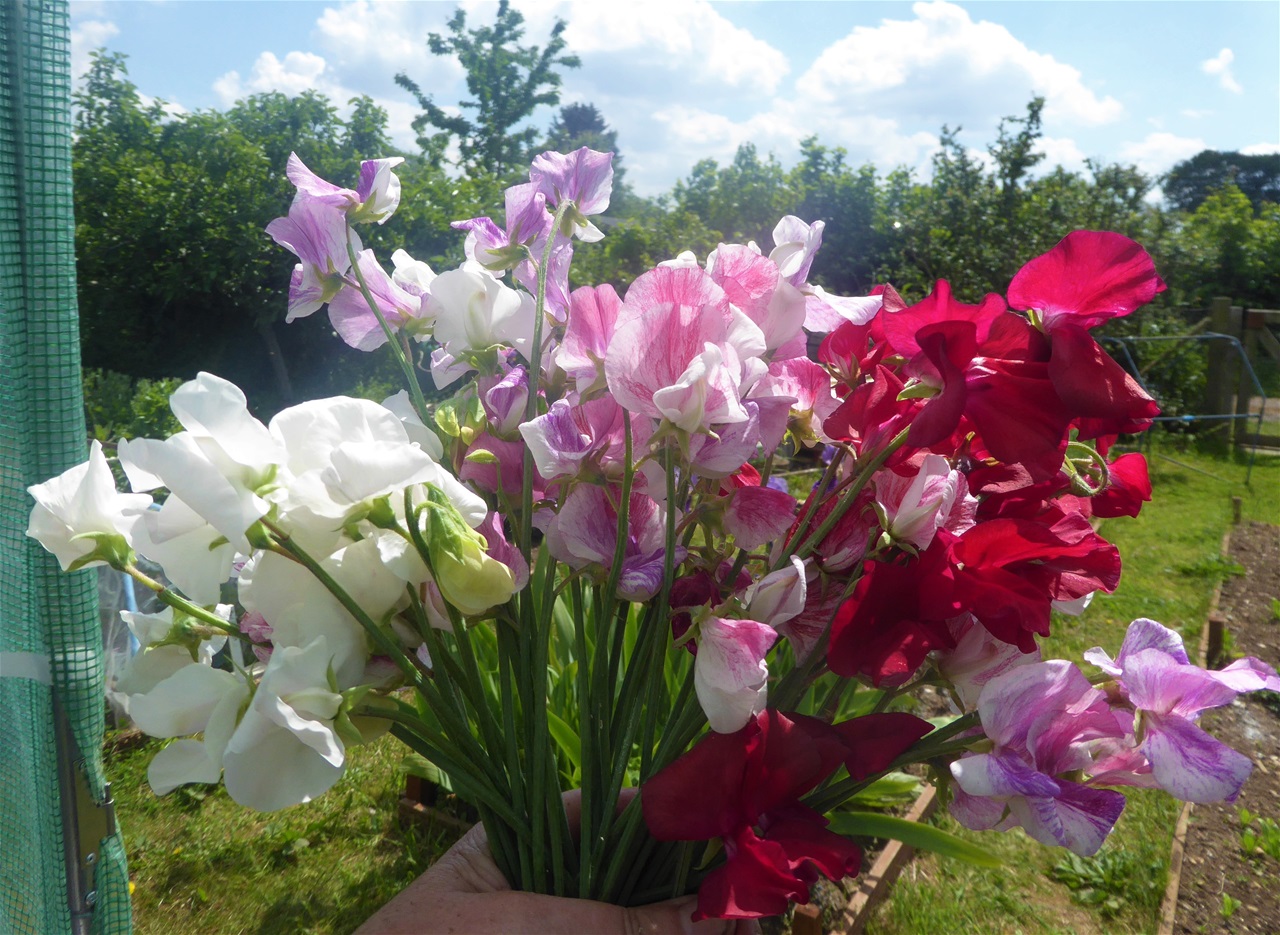

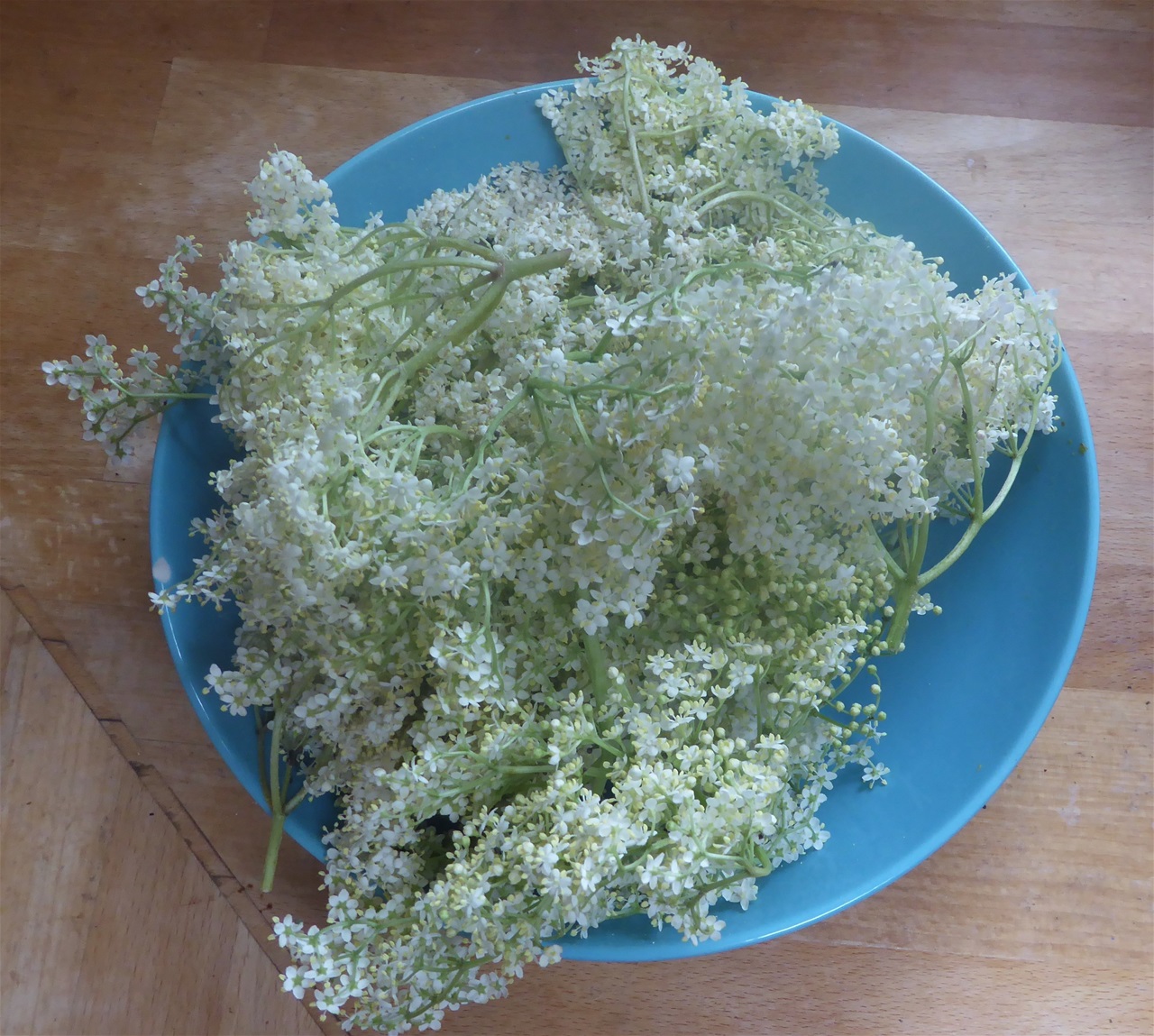
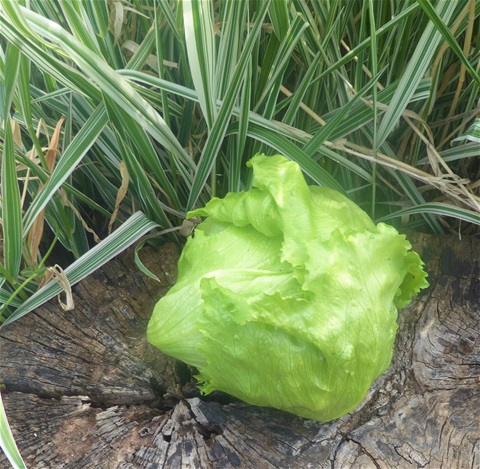




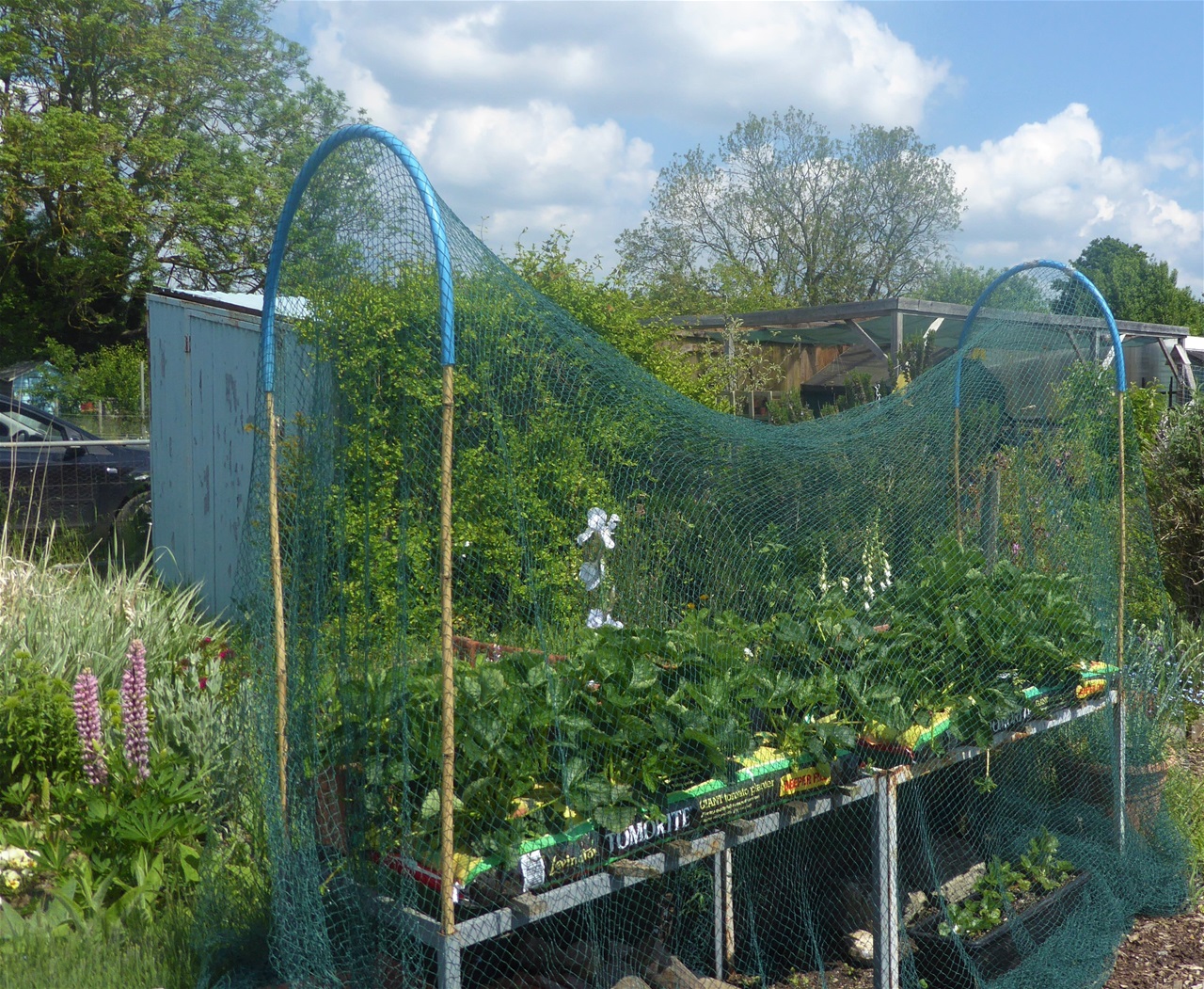

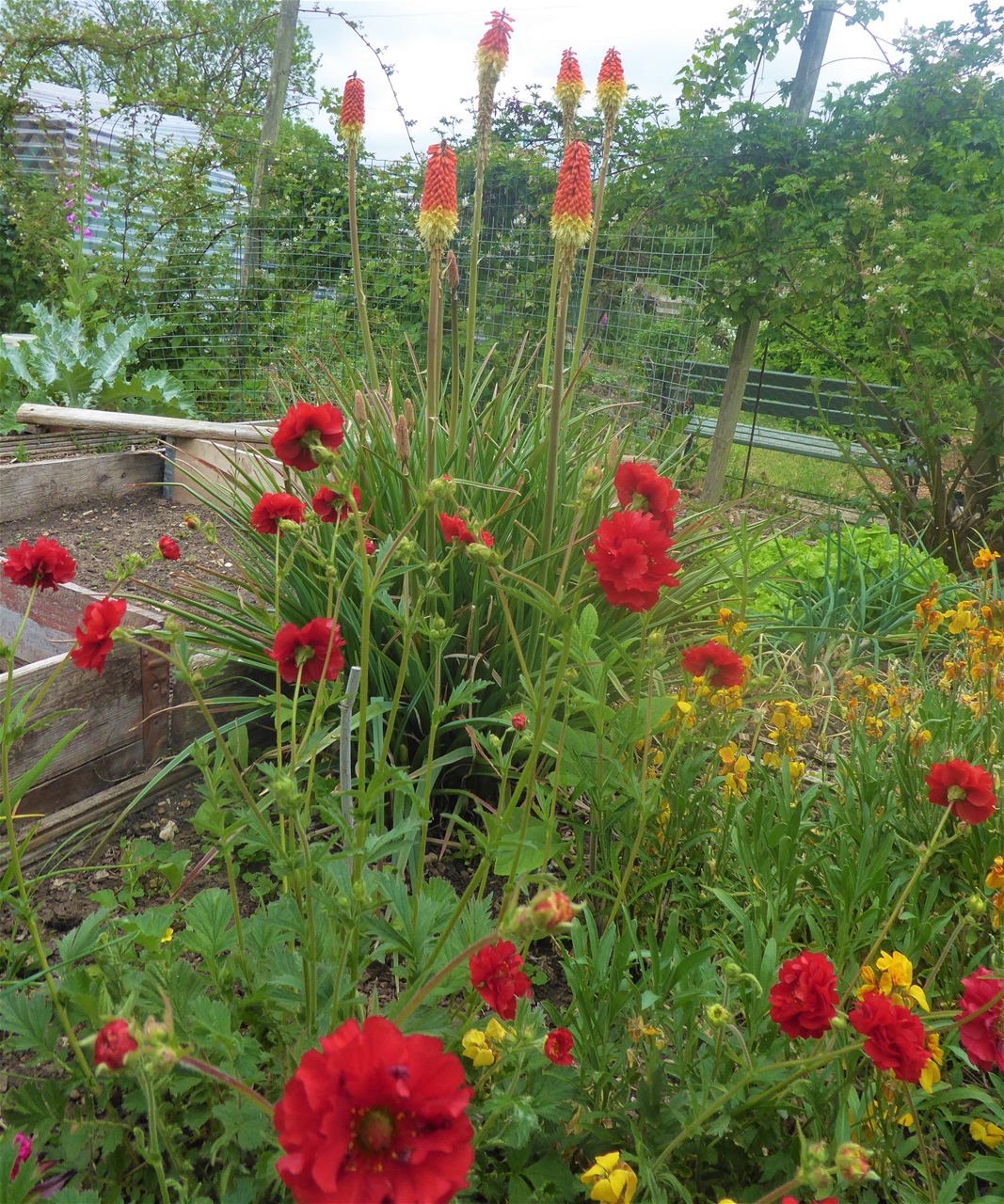
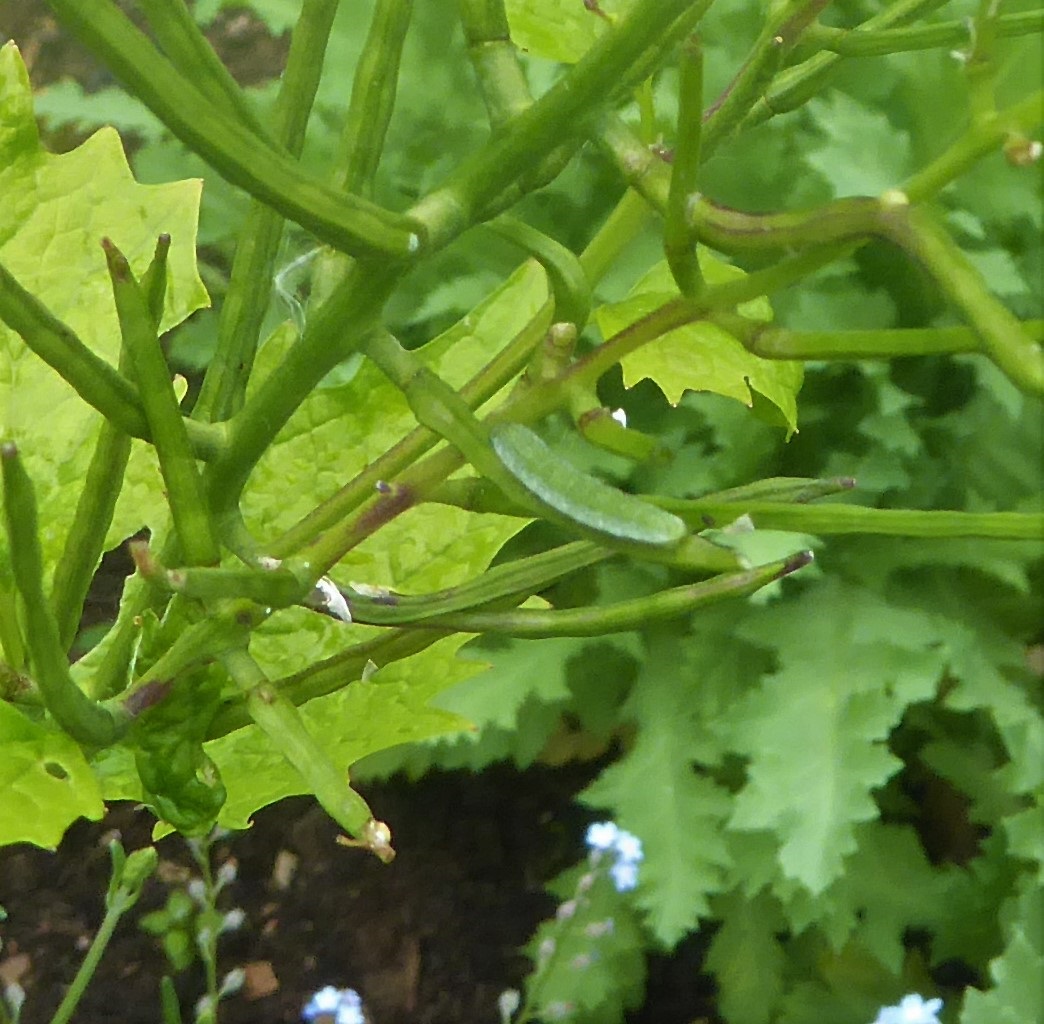
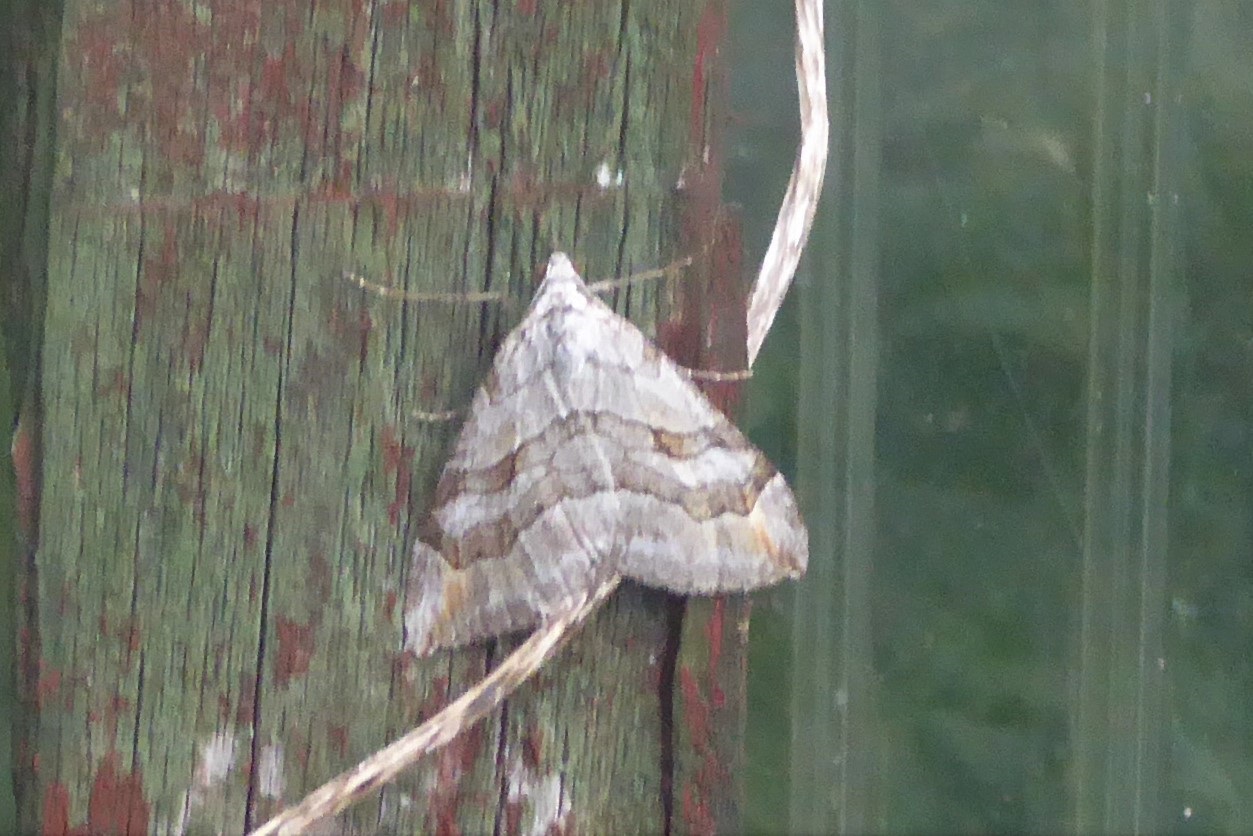
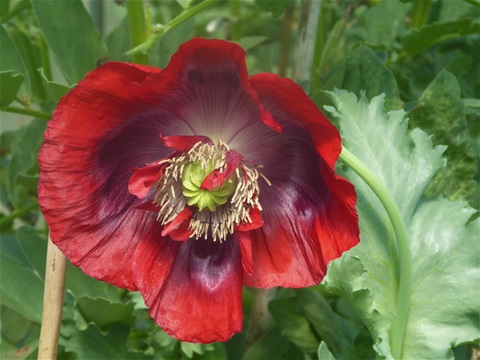
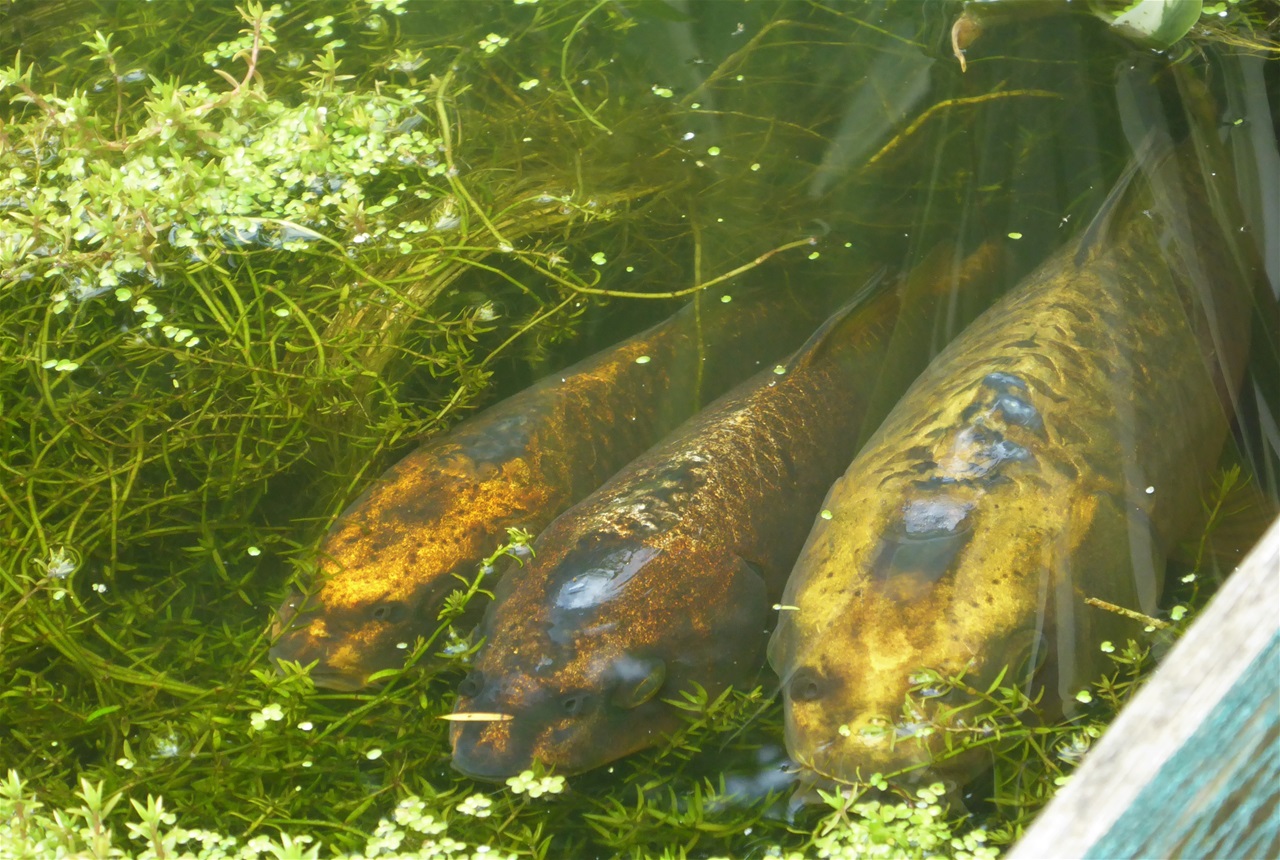
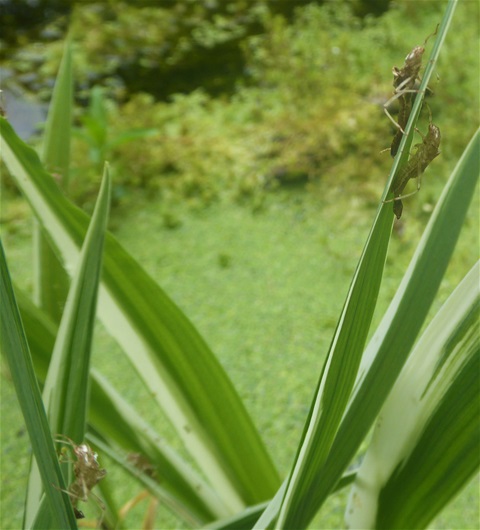

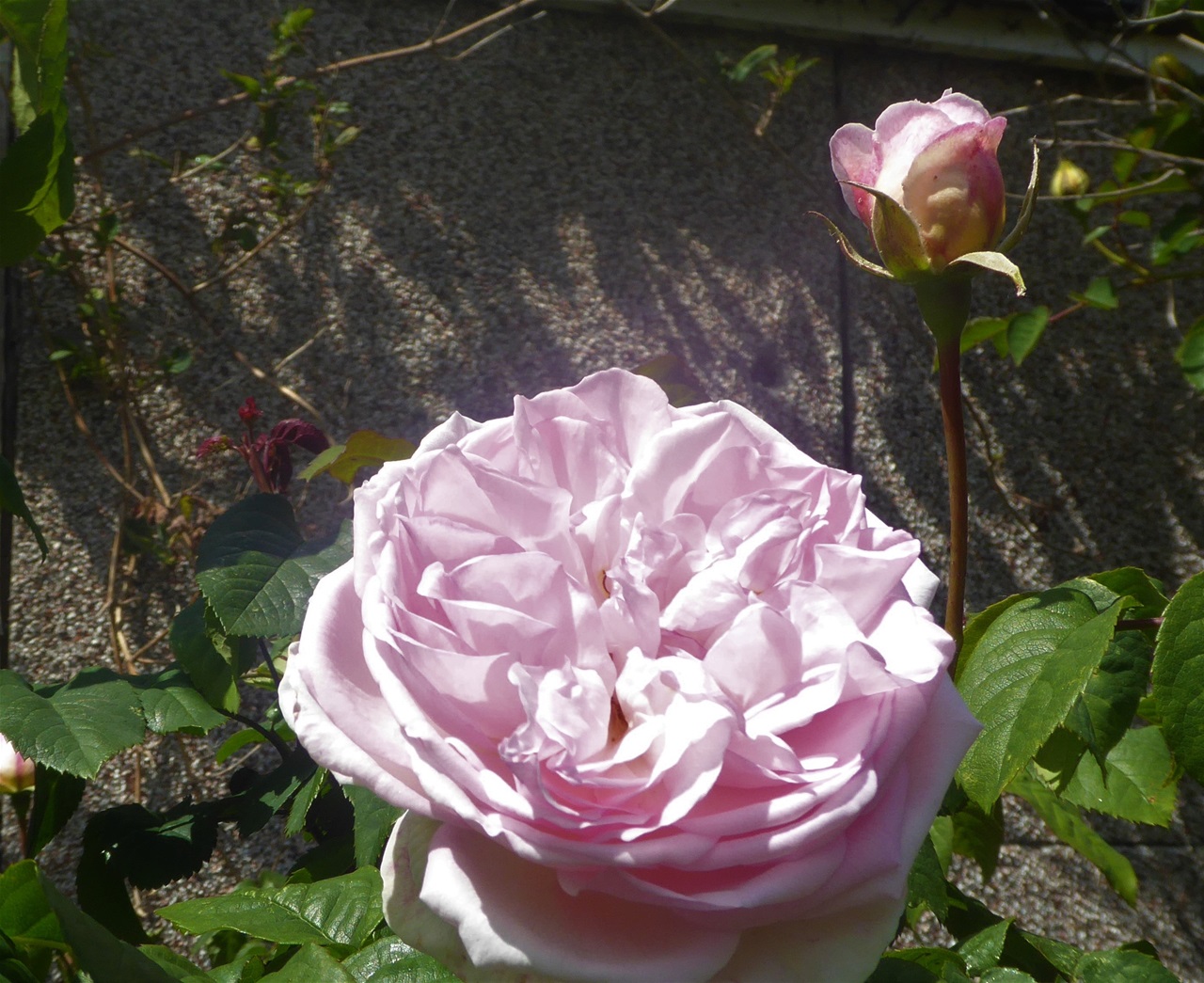



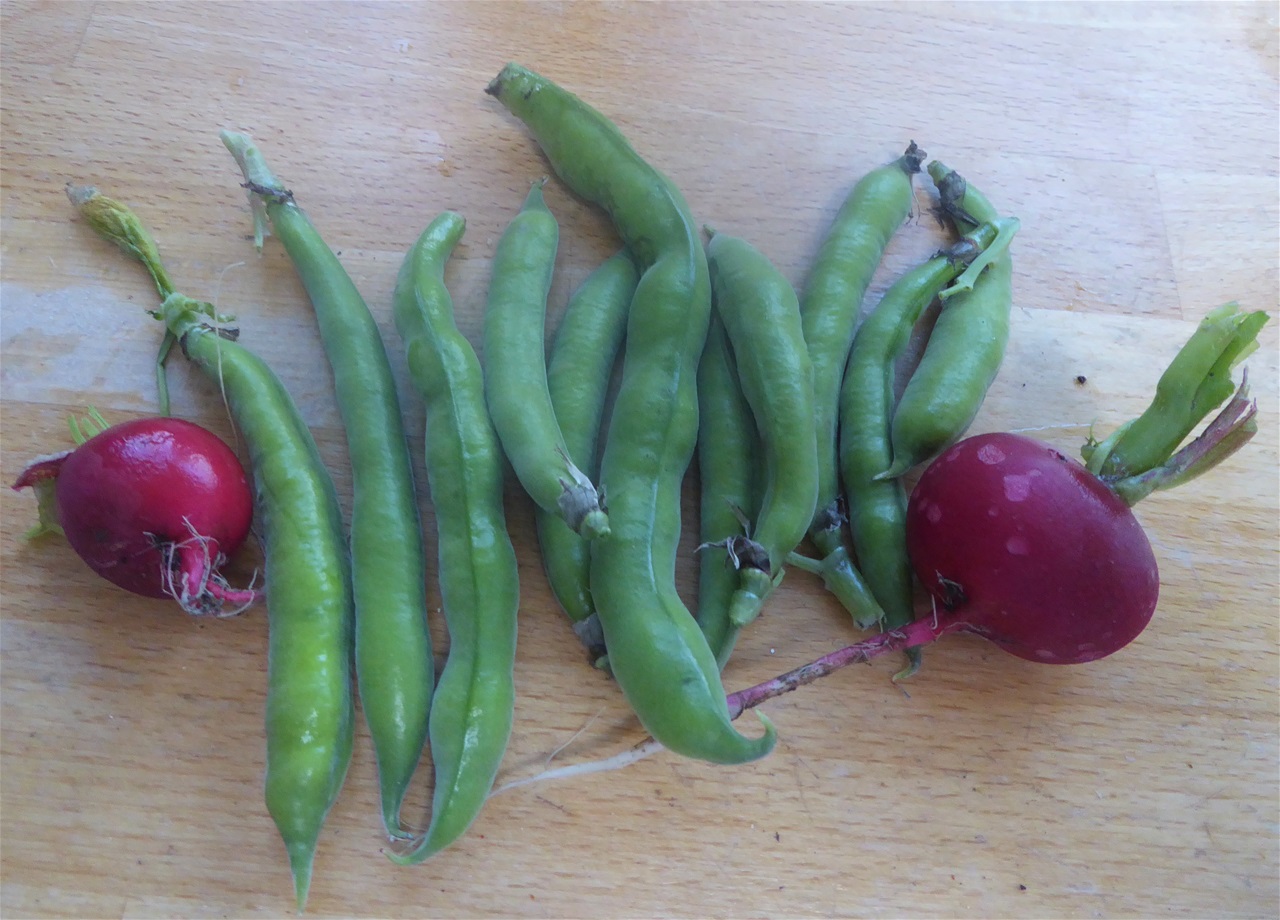



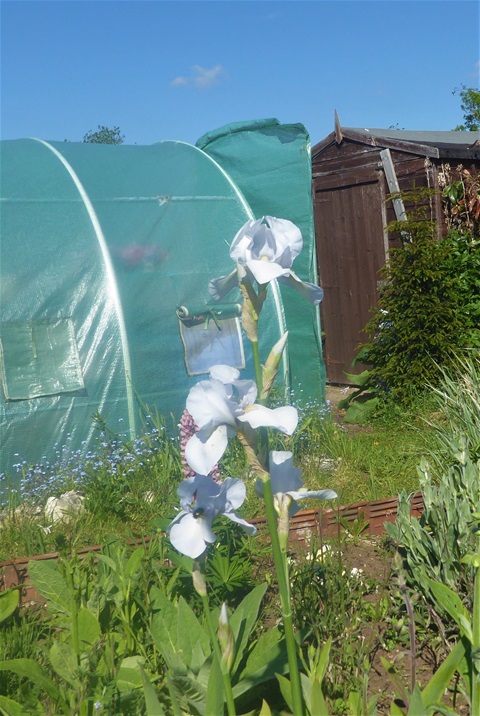
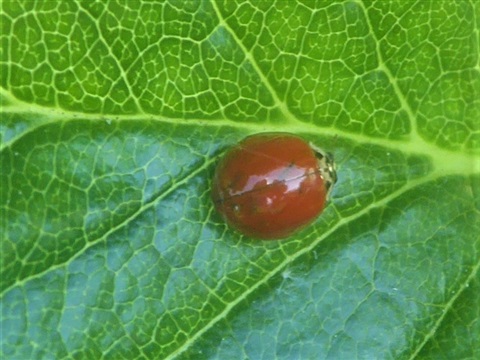
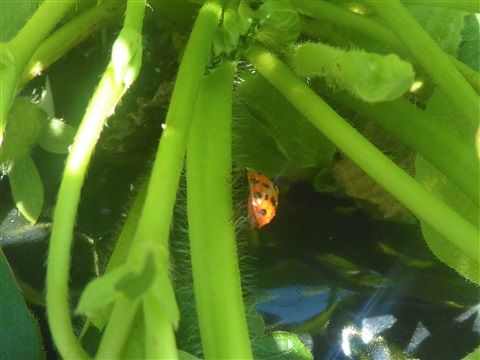
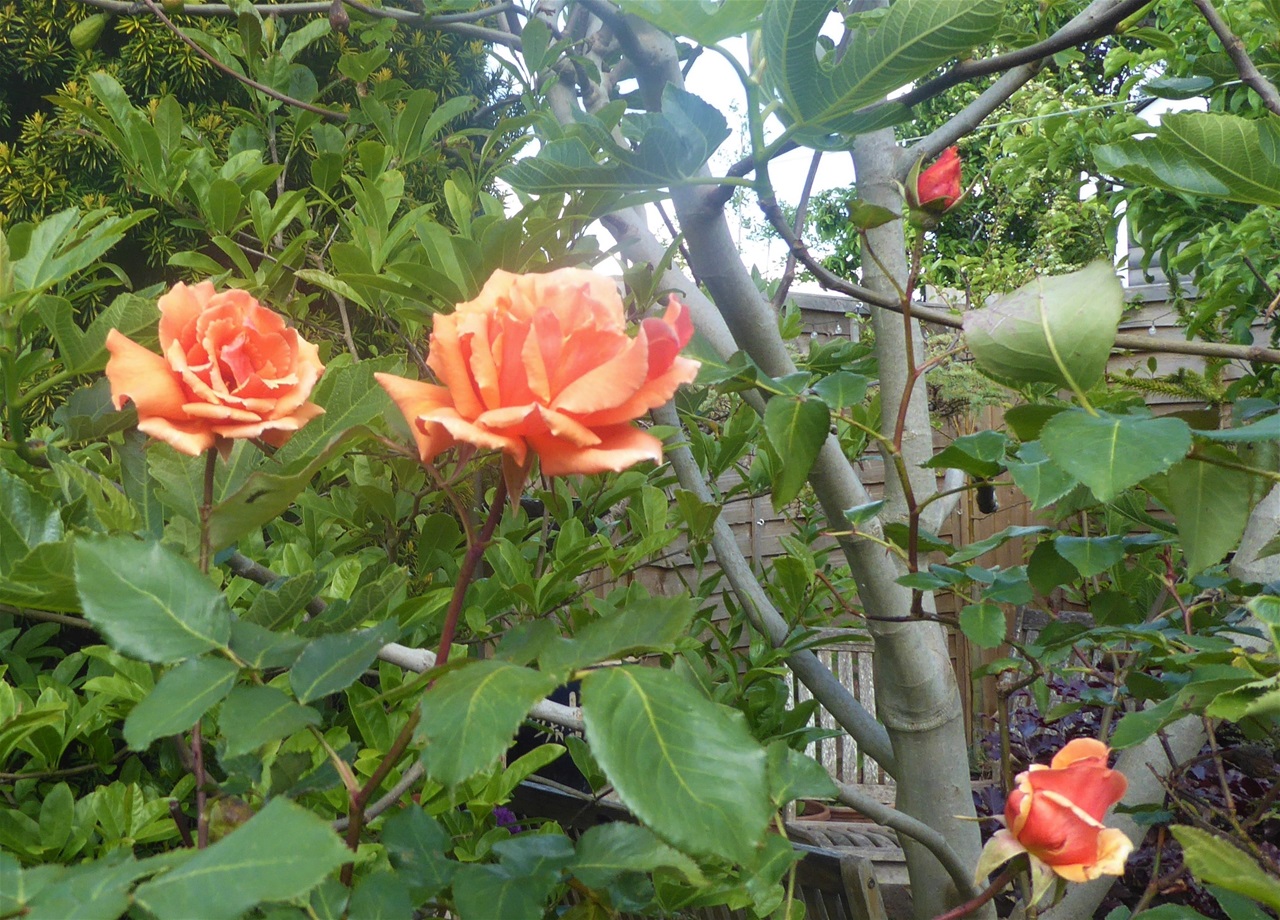
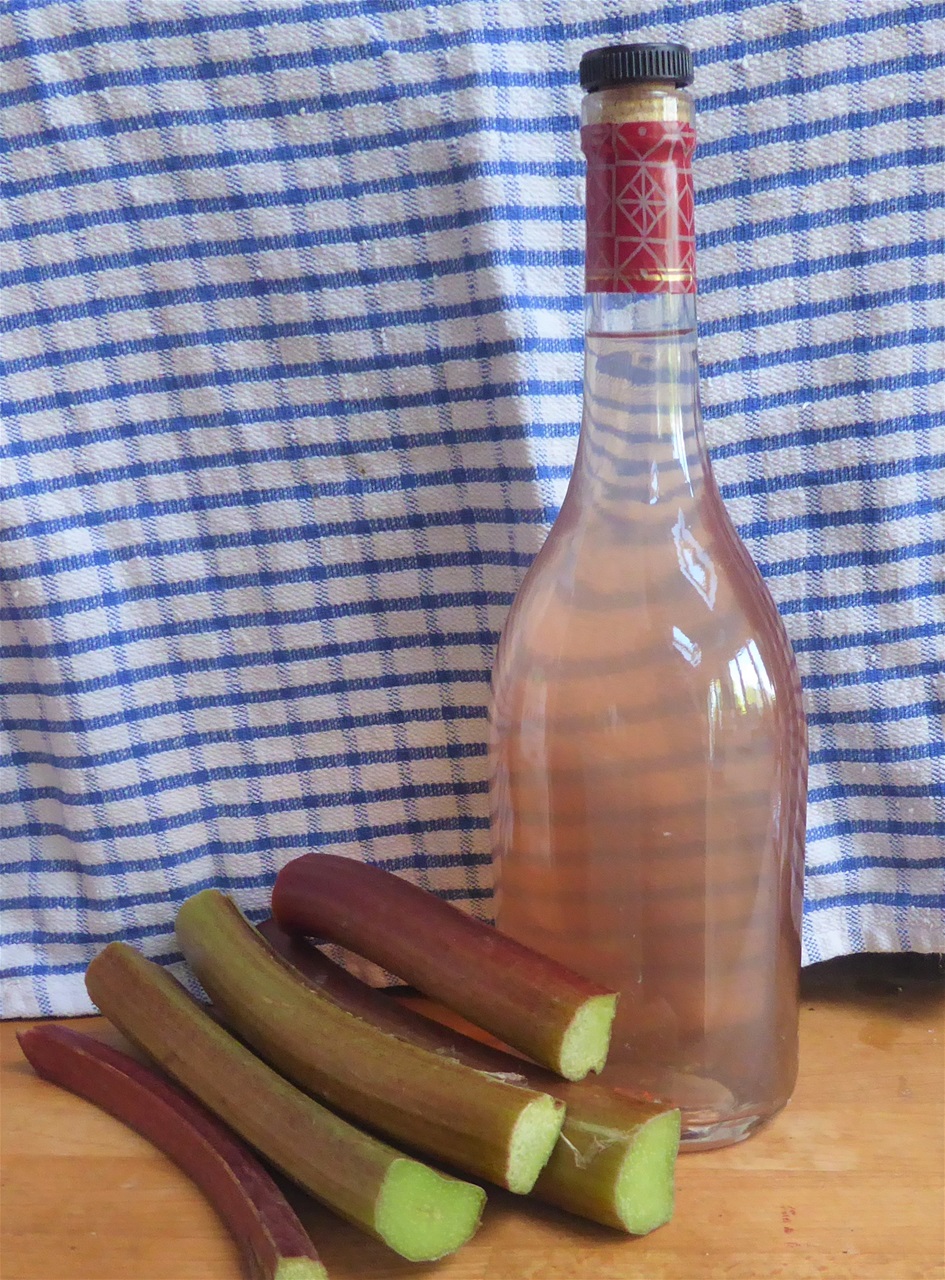
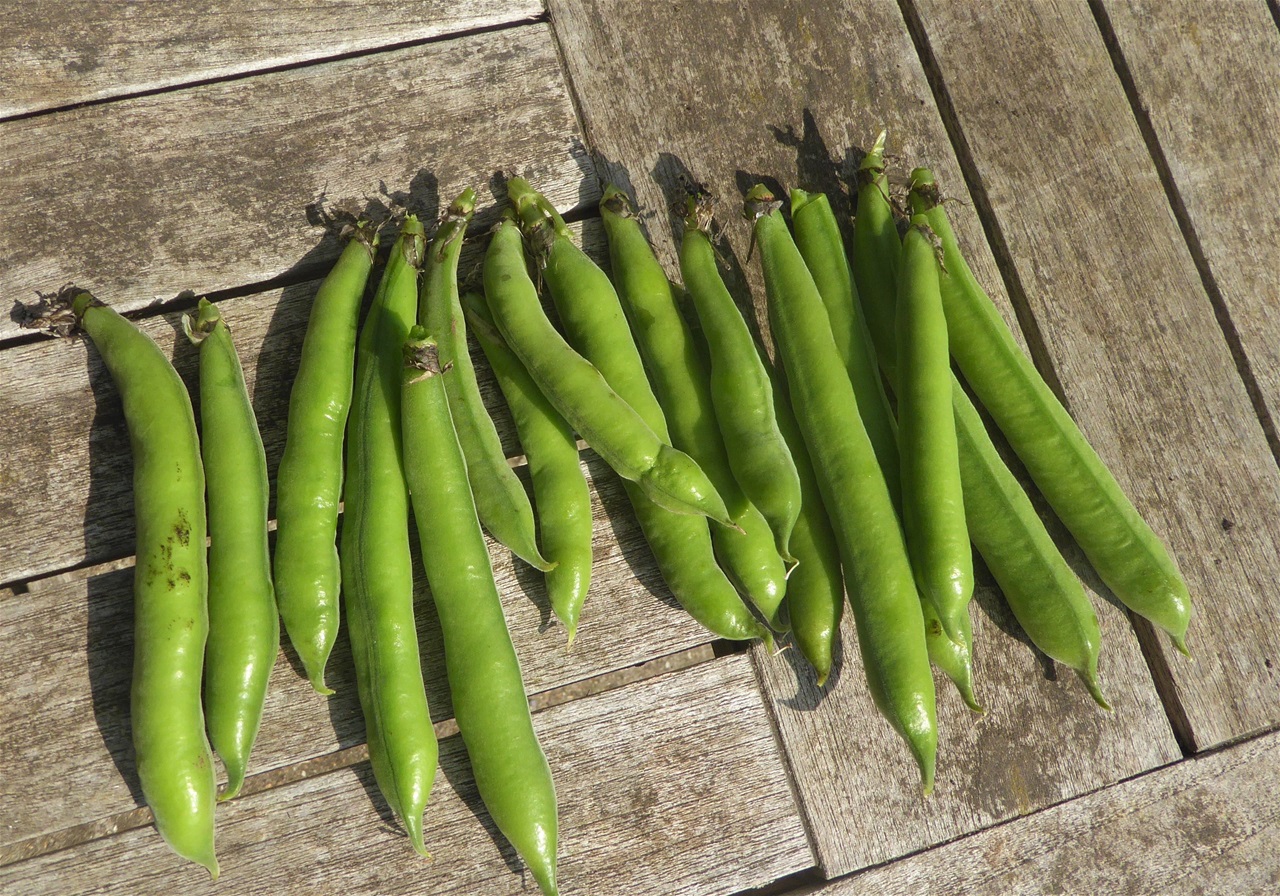
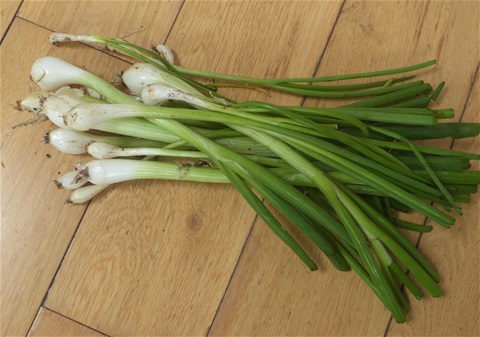
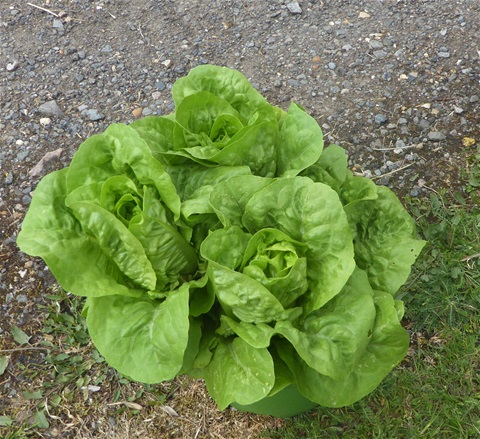
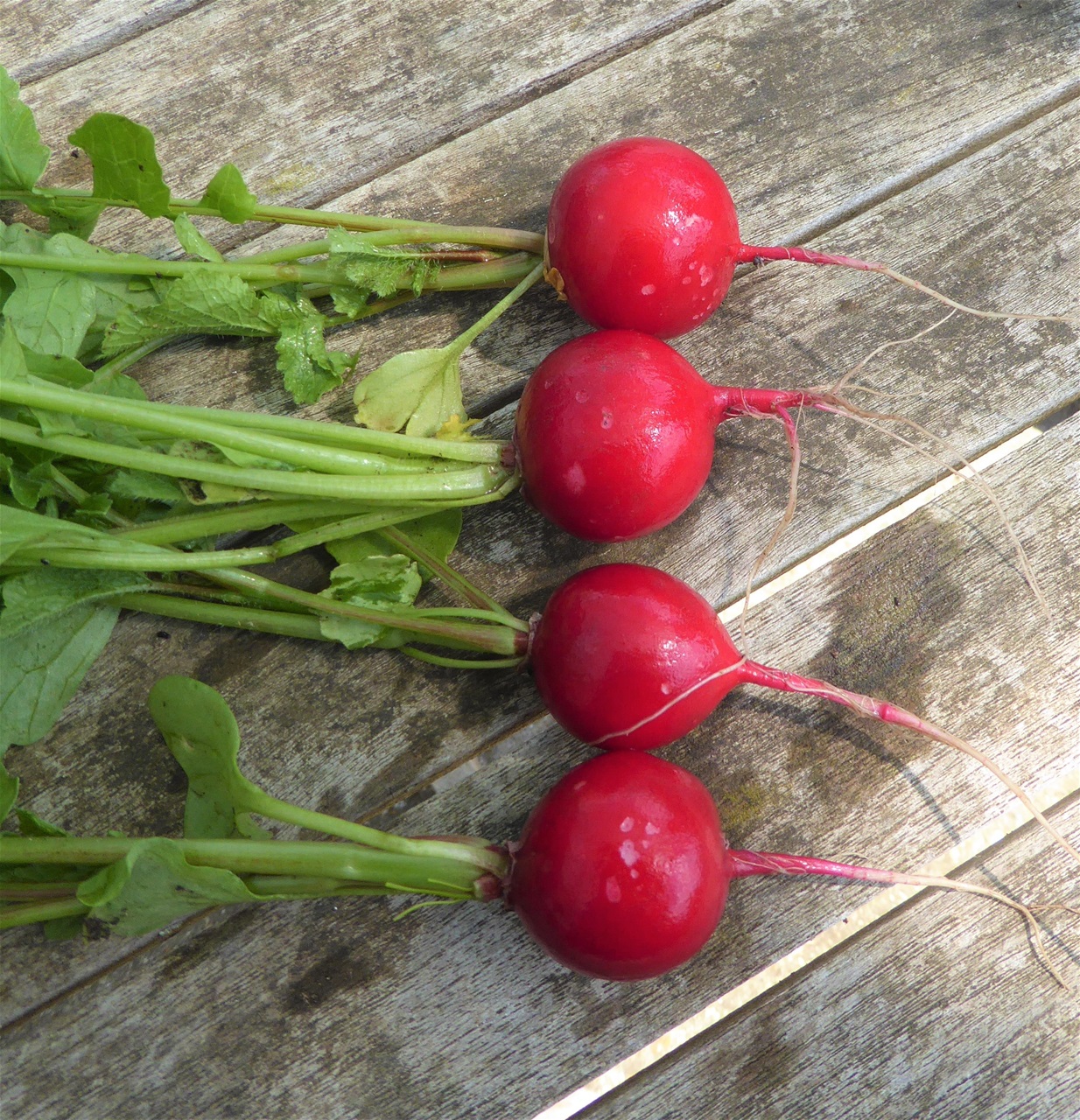


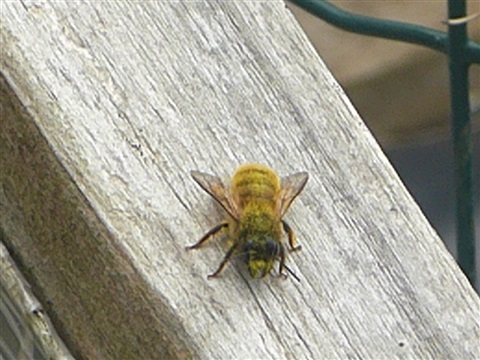
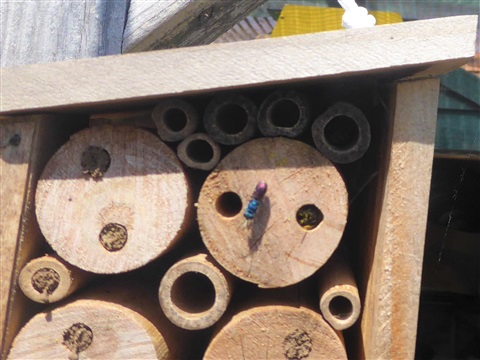
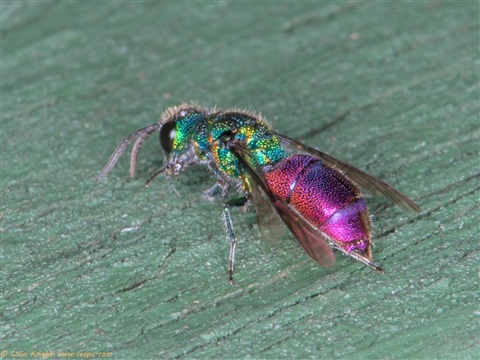
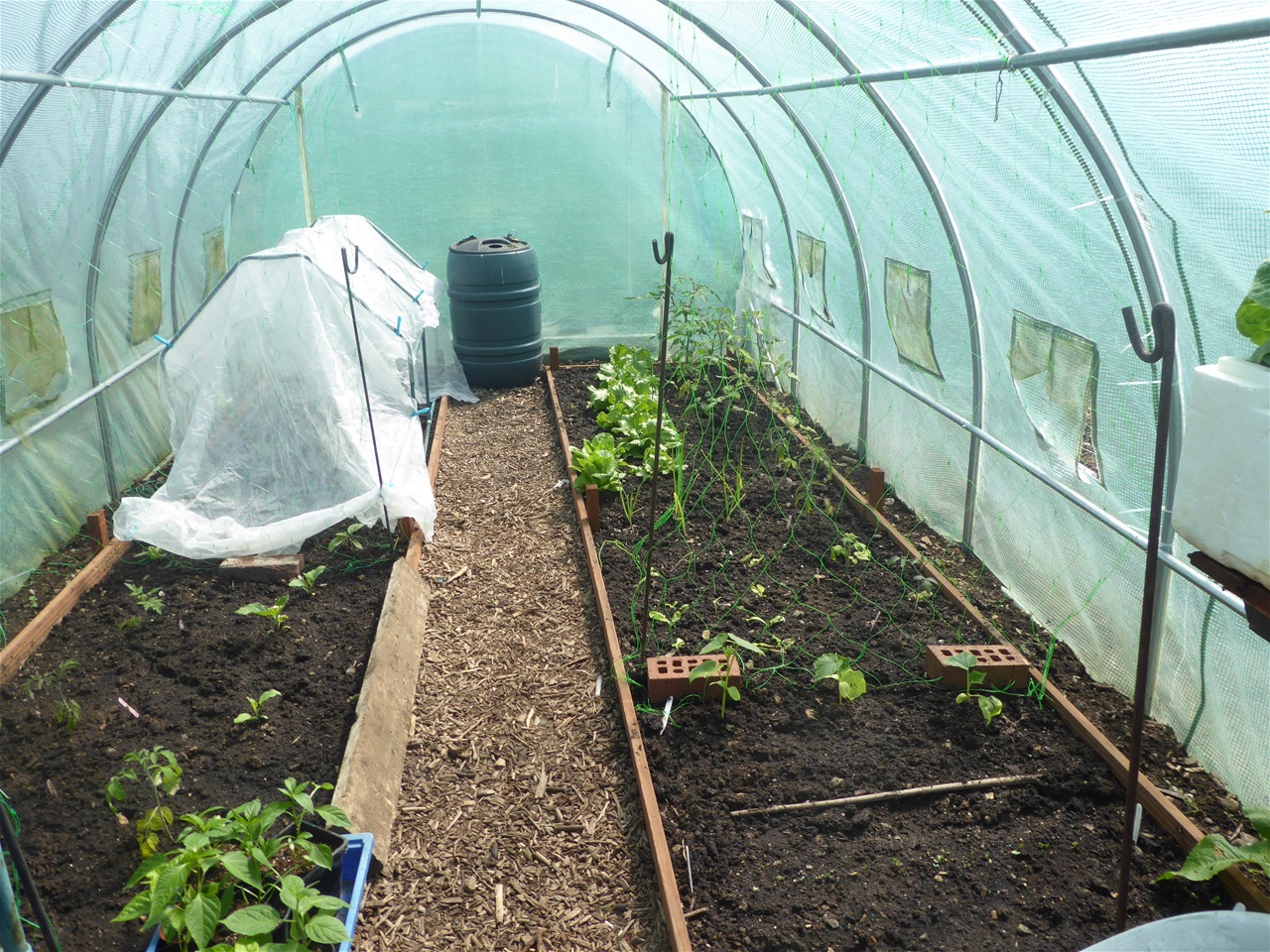

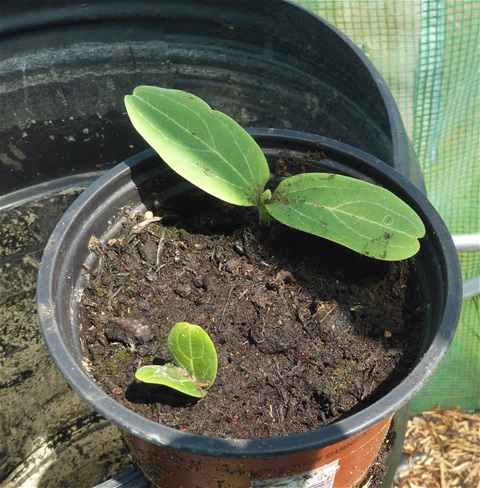
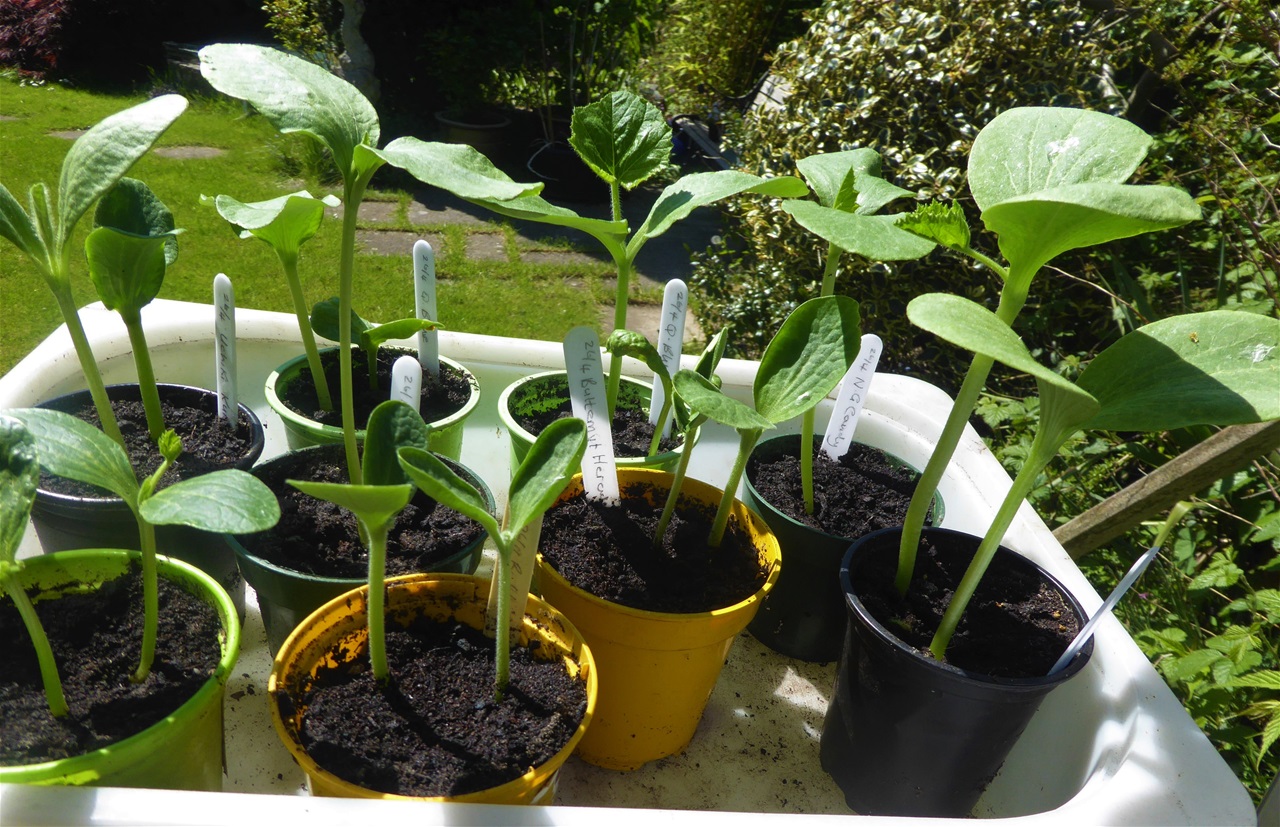
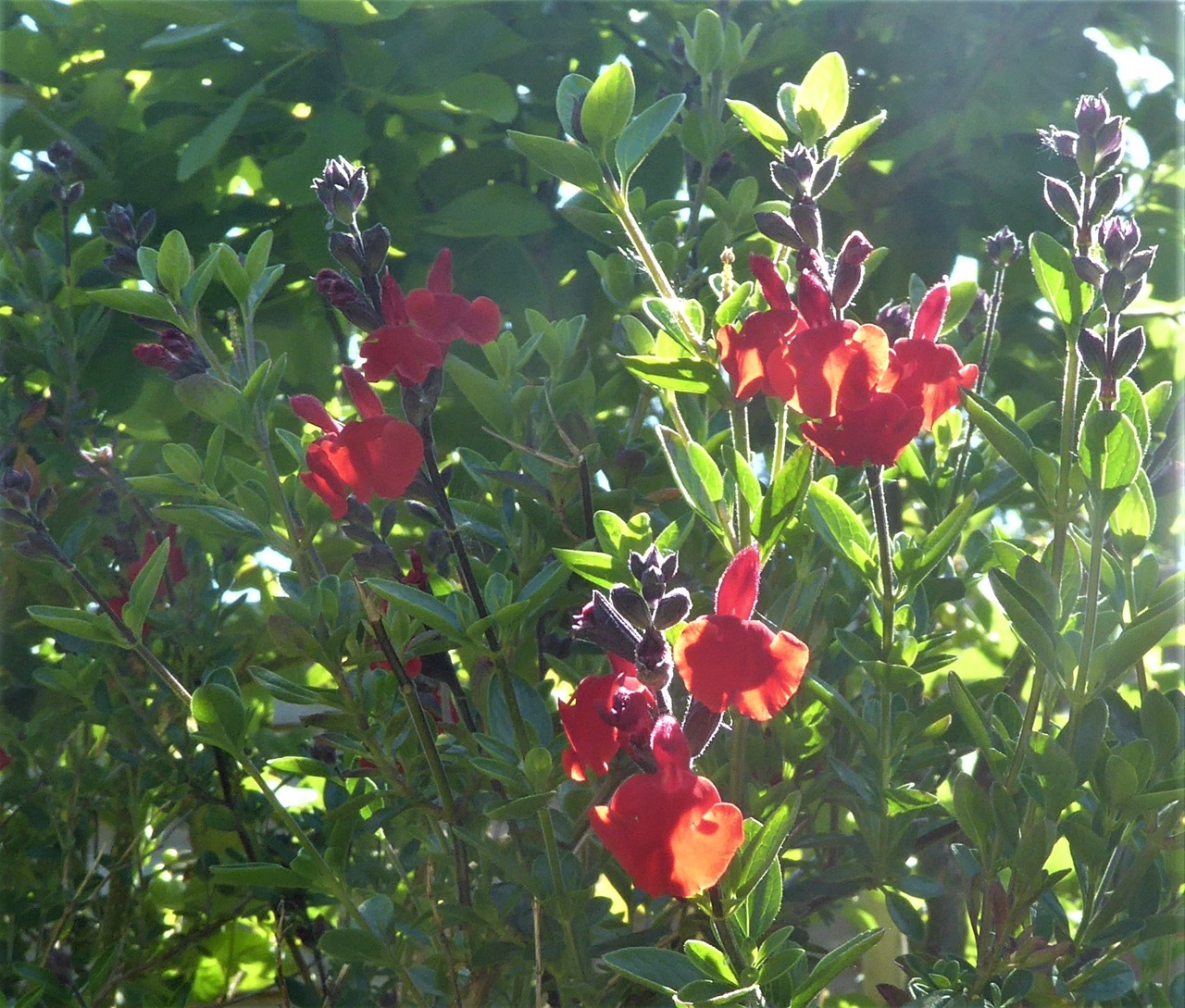
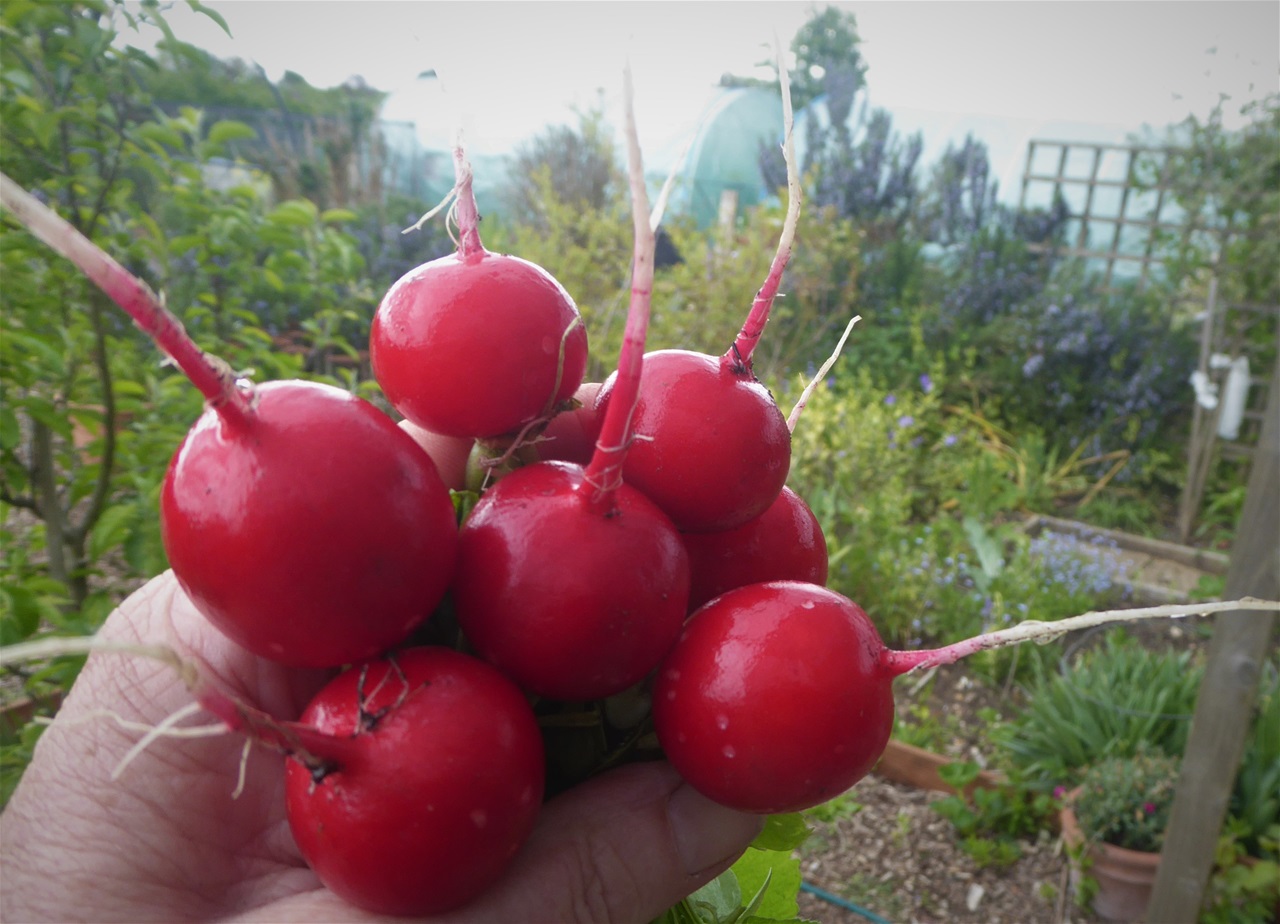
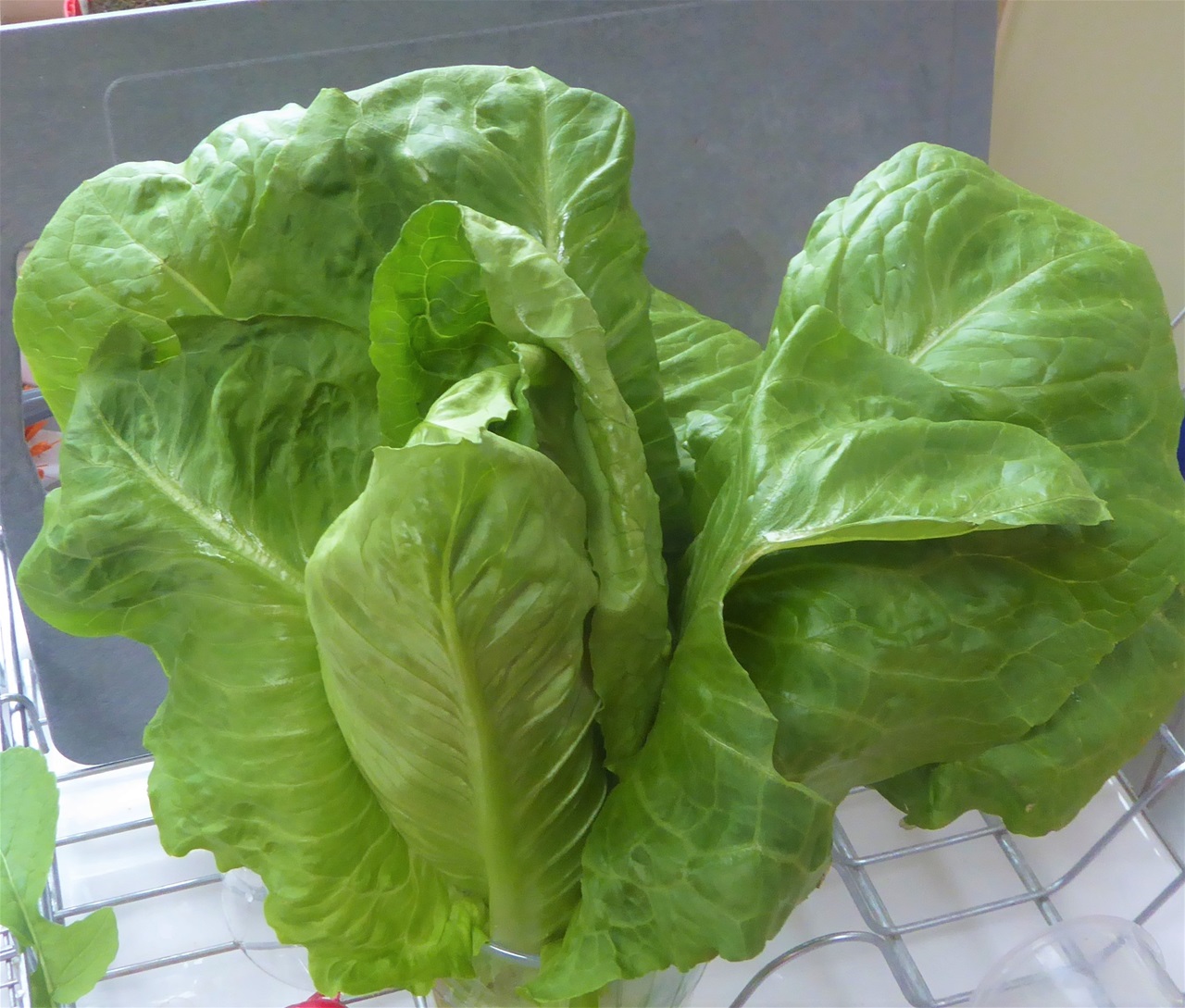
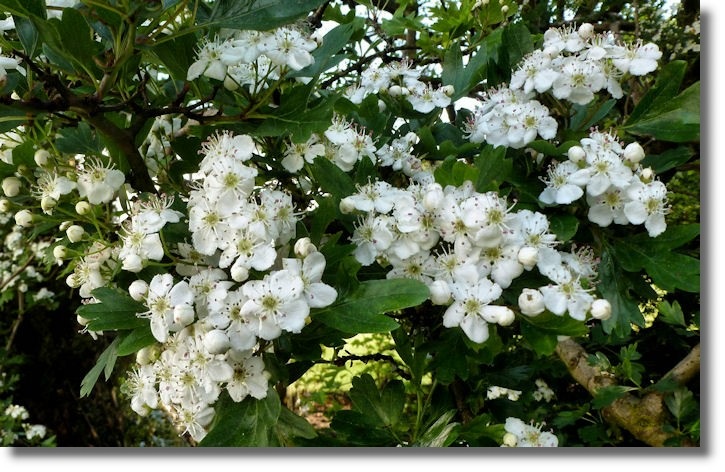
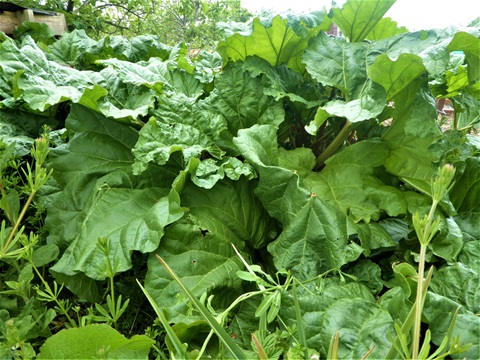
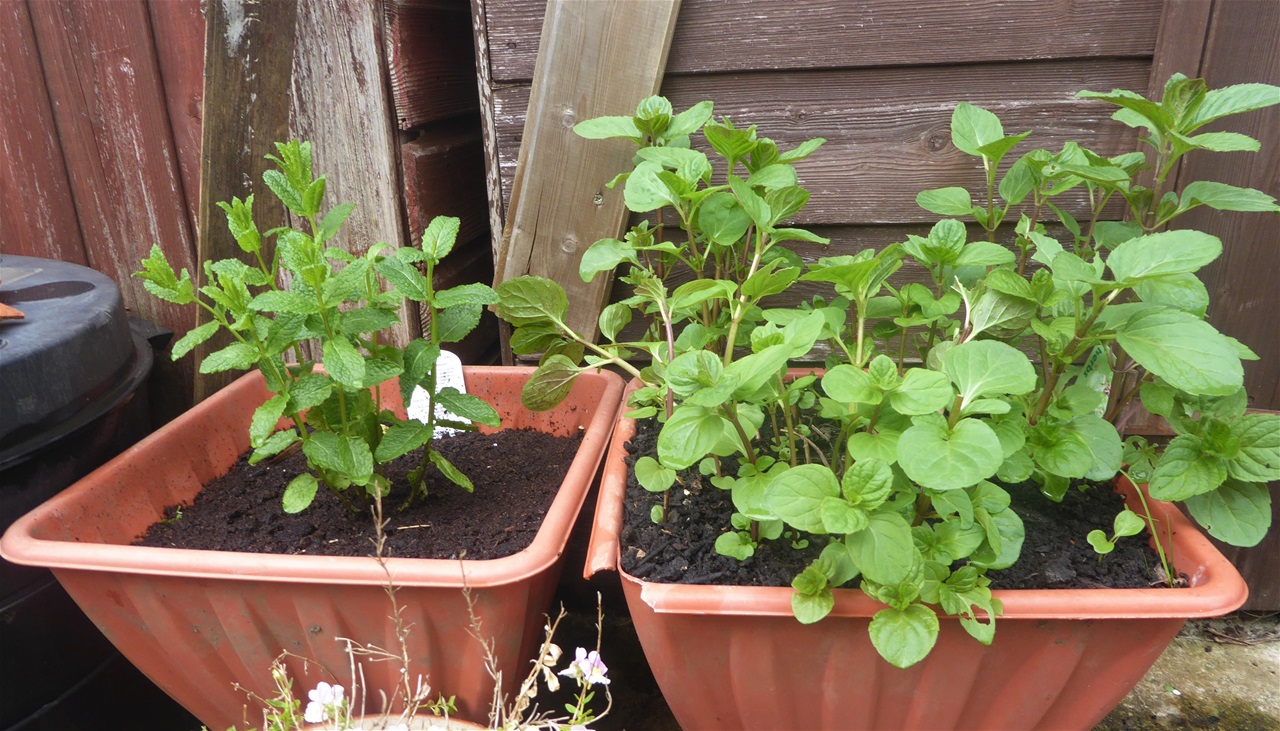
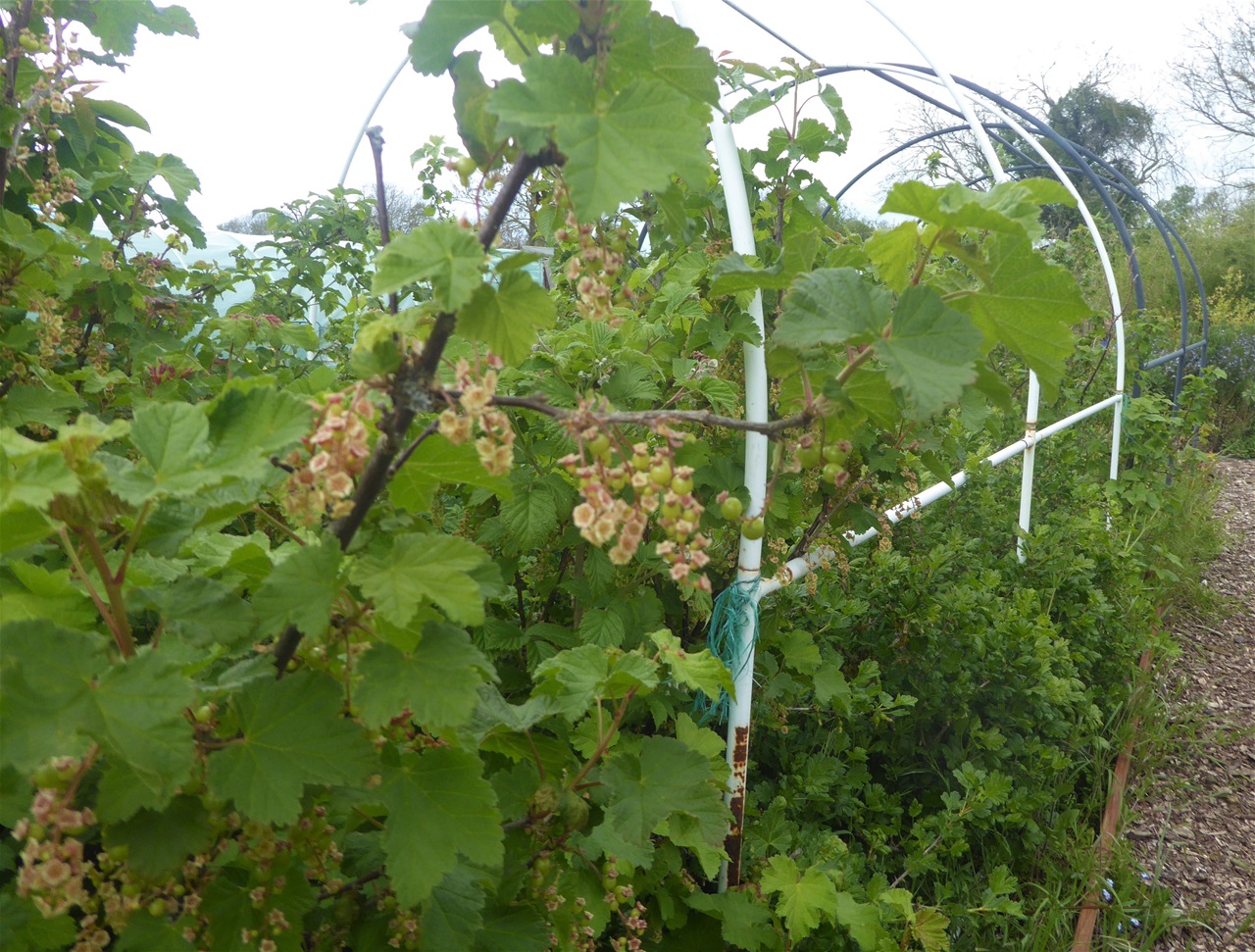
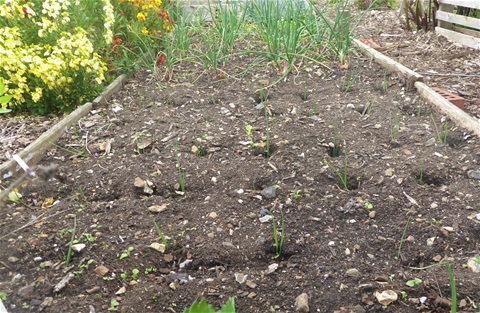

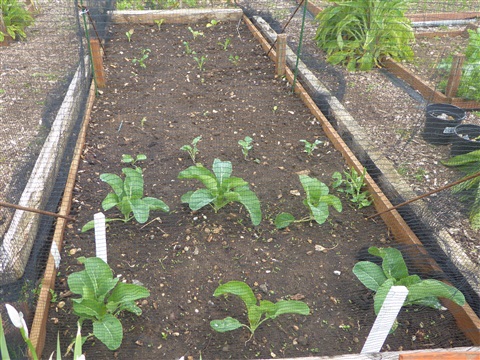
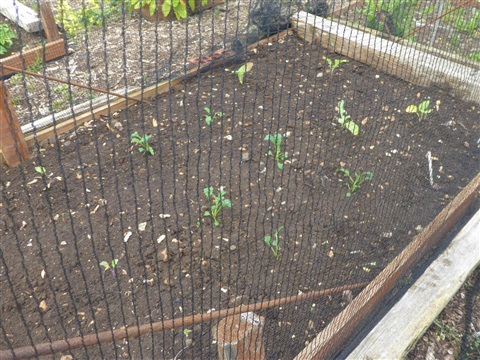
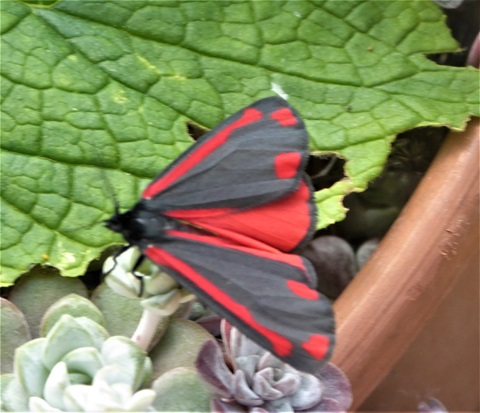

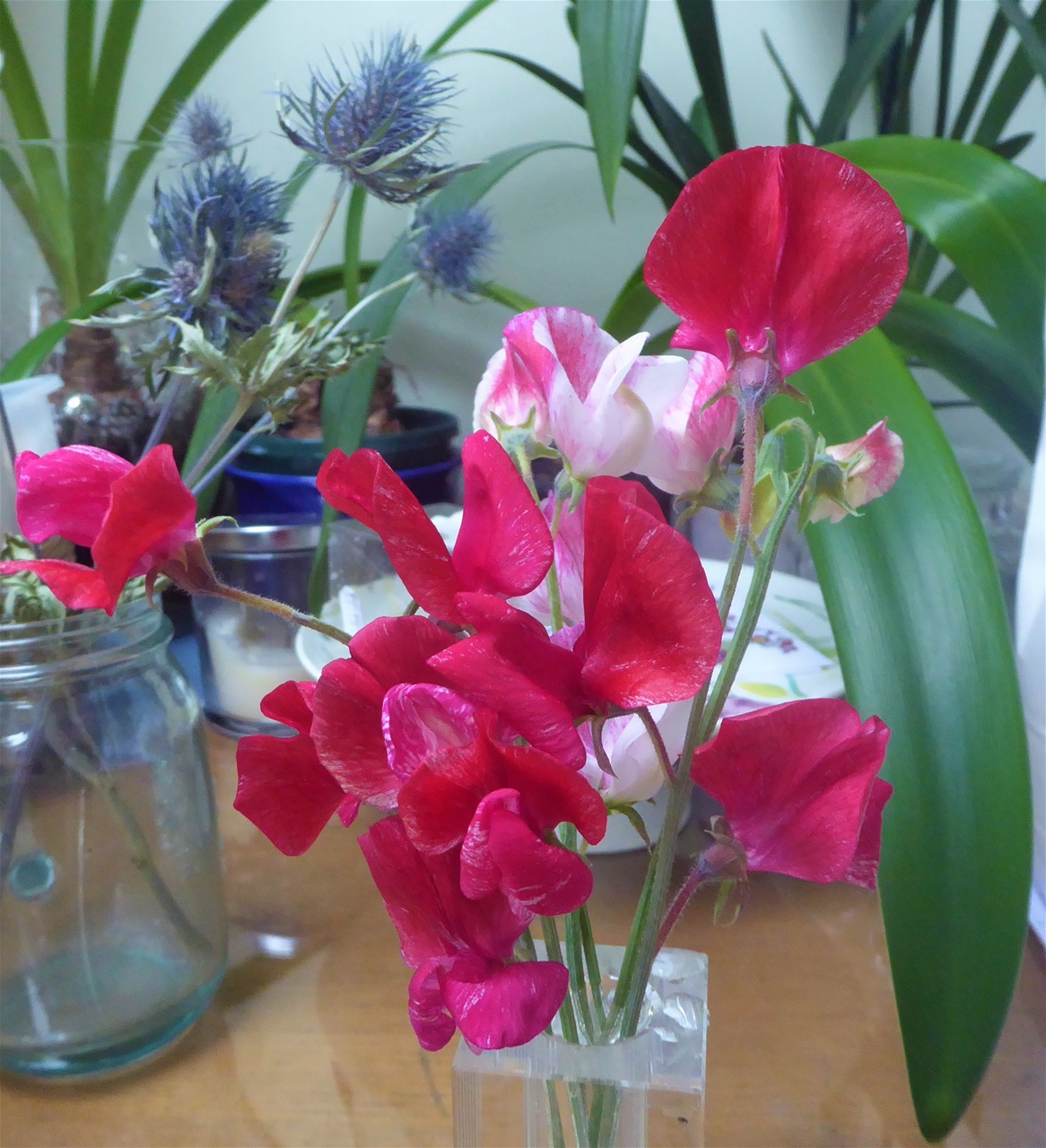
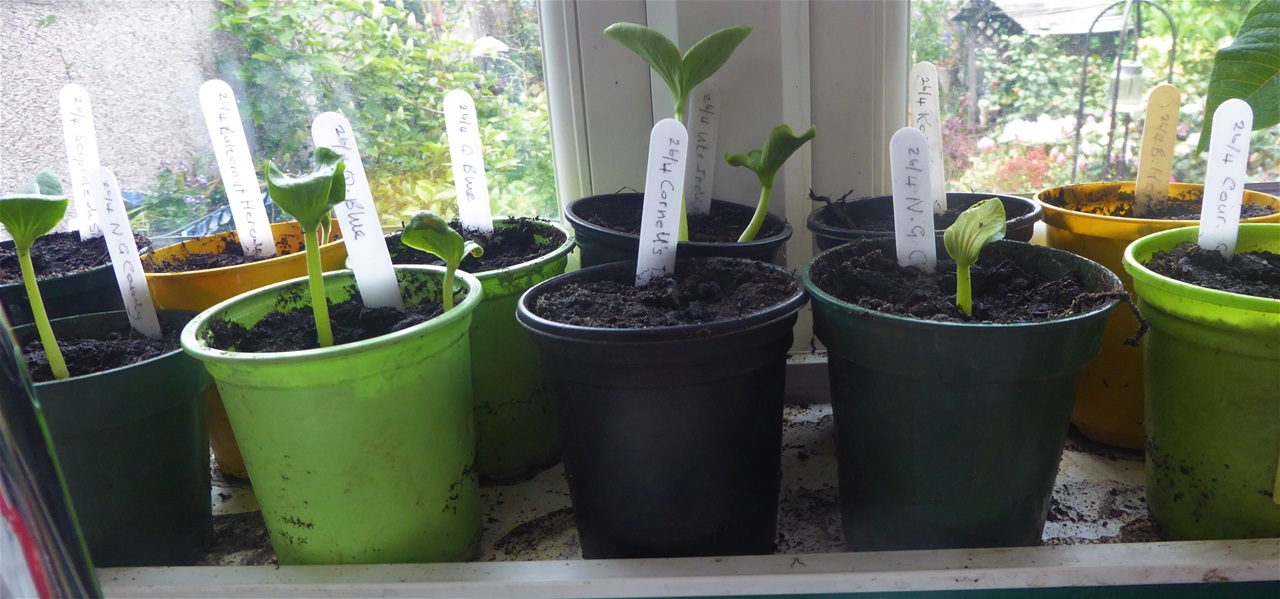
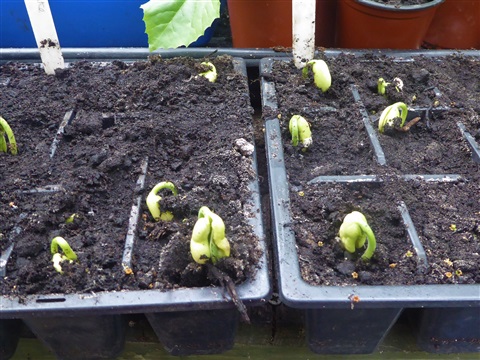
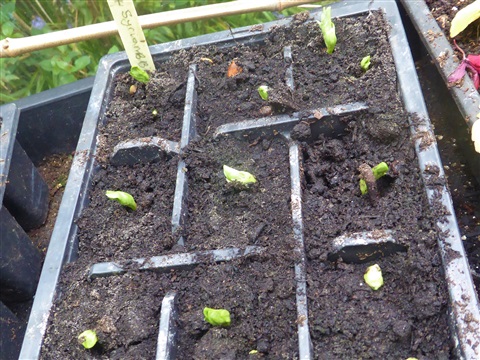
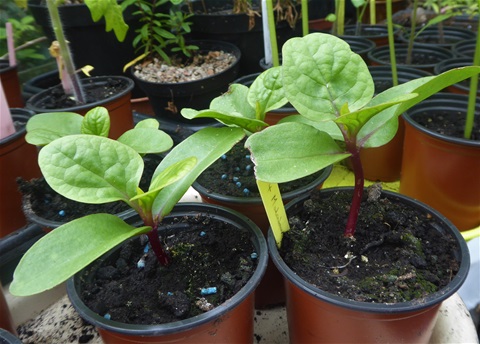
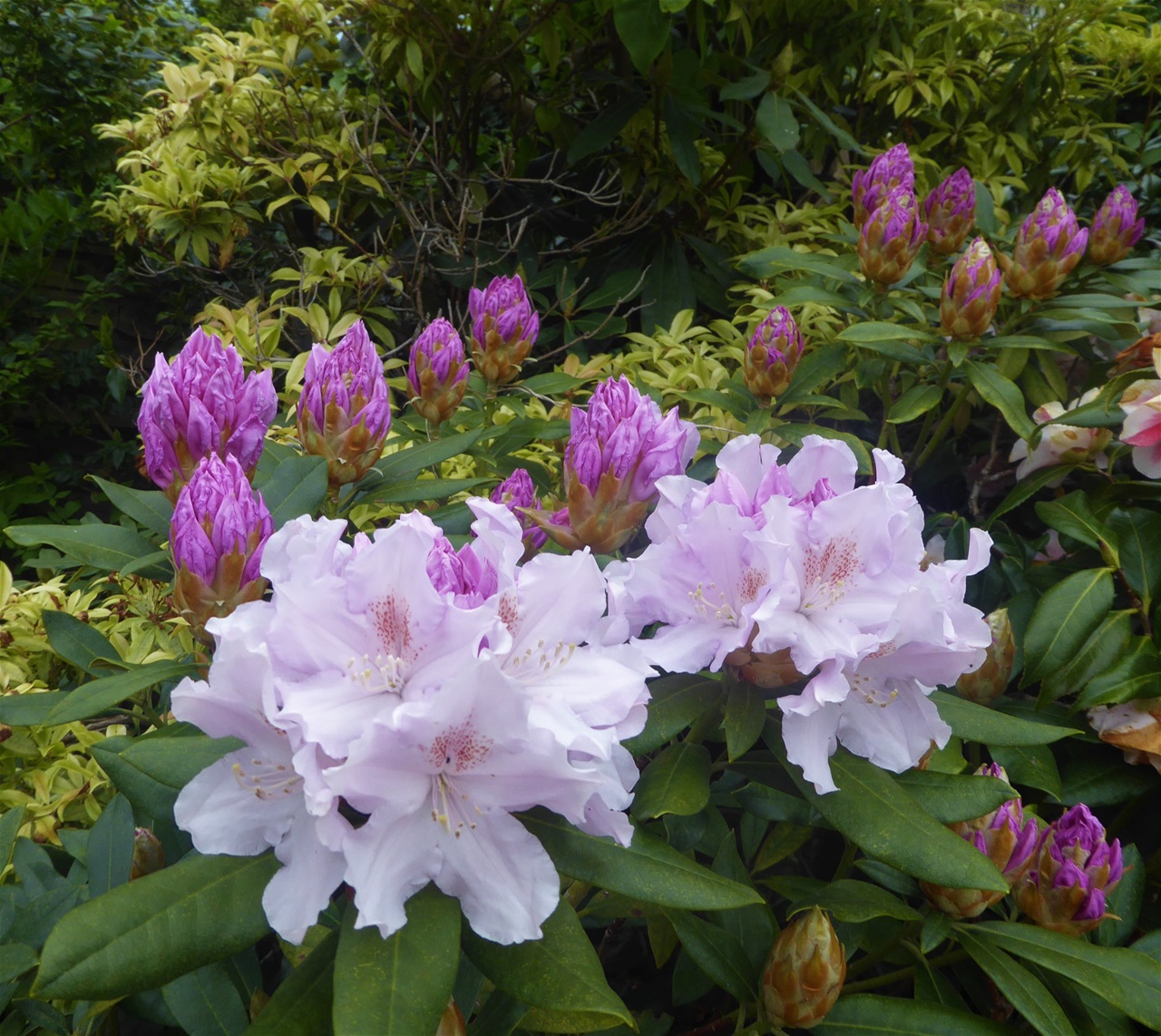
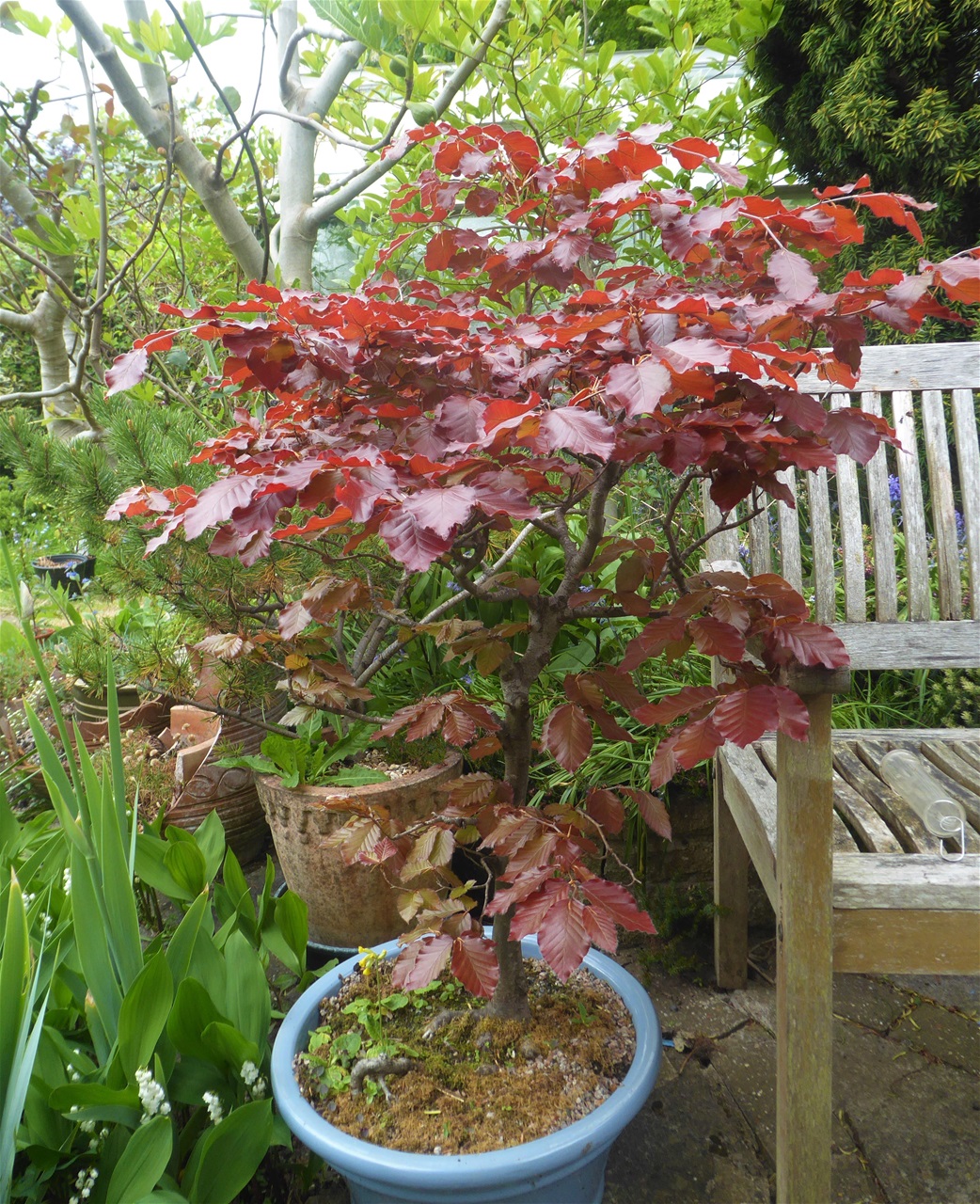
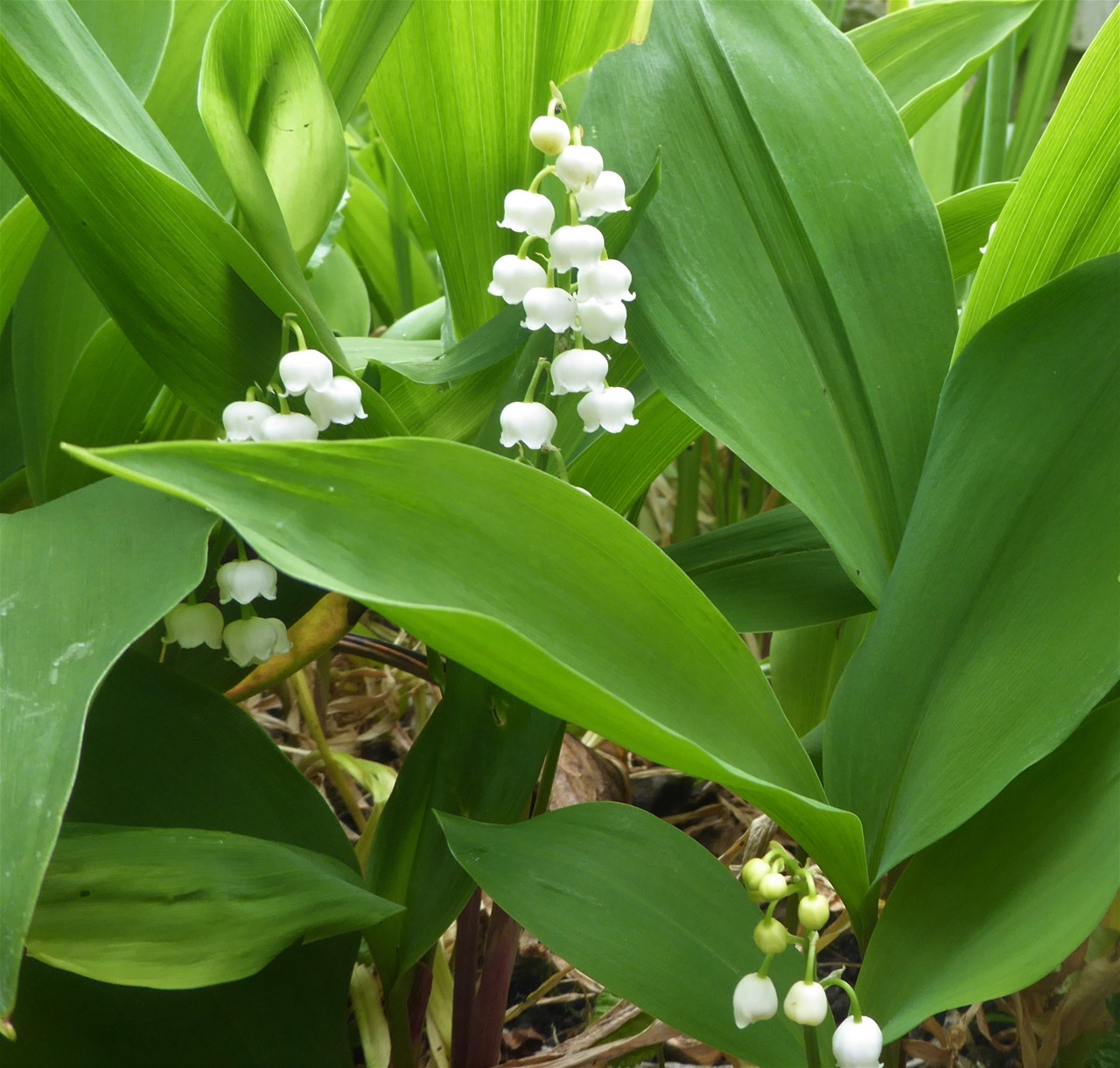
Dave@HappyAcres
Those potatoes look great! The freshly dug ones are so tasty, and I miss them since I stopped growing them.
Kathy
They do taste very good! Mind you, your leaf lettuces are always so varied and colourful, that must make up a bit for not having hearting varieties
Dave@HappyAcres
The Webb's Wonderful lettuce does indeed look wonderful! I have a hard time getting them to make pretty heads like that. Leaf lettuce usually does better for me.
Dave@HappyAcres
I would never have thought of putting rhubarb in gin or vodka! Looks lovely, and I'm trying to imagine the flavor.
Mark Willis
Isn't it nice to have LOTS of different veg growing? I can't imagine what it would be like to grow just one thing! If I really HAD to grow just one crop, it would be tomatoes.
Linda Barratt
All your hard work & love of your plots shows so much here Kathy. You have so much already in it ours m6 efforts to shame, give yourself a pat on the back. Linda xx
Kathy
I find they need to have plenty of water to keep them growing quickly, the eat them as soon as they are large enough. Towards the end of the Summer they are never so good though, however hard I try!
trillium
Really nice radishes. Mine are so dried out and pithy so quickly.